#different cities had different festival calendars different month names etc etc etc
Explore tagged Tumblr posts
Note
heyo, I saw the ask about reconstruction based on different regions, and I had to ask...what are the "options"??
Maybe this is somewhere I haven't found yet, but what are the main regions/cities that are...reconstructable with a plausible amount of evidence? Athens/Attica, Argos, others???
And what are some basic, major differences (like pantheon switches) between the regions?
Thank youu 🥰
Oh man haha we need a catalogue to browse through don’t we?

You could base it on the states of Greece, but even then there are regions within states that have their own calendar - like the Peloponnese, where I’m reconstructing worship in the city of Argos, but there’s also Epidaurus, Elis, all of Arkadia, Laconia, Messenia, etc.
@thegrapeandthefig has a post here on what tumblr users reported attempting to reconstruct, and whether we’ve found a usable calendar for the area.
There are also the classical “ethnicities” within Ancient Greece - Ionian, Dorian, Aeolian, and Achaean. Regions with a strong ethnic presence tend to have similar festivals and rituals (ie. Crete, Sparta, Argos, and Corinth are all Dorian with individual calendars, but many of the same month names and festivals), and this helps with reconstruction as information in one area may be sparse but we can “fill the gaps” as it were based on this.
The major differences are indeed the typical pantheon each region prioritised, and this is also why there are conflicting myths. There are also festivals to local heroes, celebrations of wars won, and various human aspects that can only be found locally.
One of the easiest ways I could show you the options is to have a look at the gods’ cult pages on Theoi.com - for example, the cults of Apollo. This is separated into regions, and while there will always be similarities and overlap, you could use these cult pages as a jumping off point for what interests you the most.
All this without even getting into the demes (like suburbs) of Attica having their own individual festivals within the calendar …
I hope that helps give you an idea of what we’re working with!
40 notes
·
View notes
Note
This is probably a very stupid question, but how did the Ancient Greeks measure time (in terms of years and months) ? What was their calendar like? What year would Alexander have viewed himself to be living in?
I love these sorts of daily-life details, so I may have got a little carried away…. Before I get into the weeds, however, I want to make everyone aware of a reference resource:
E. J. Bickerman, Chronology of the Ancient World. Thames & Hudson, 1968.
Yeah, it’s old now, but Bickerman spent most of his career on dating puzzles, and I don’t think there’s anything recent to match it. When I first was told about it years ago in my historiography class, I practically bounced off the walls. (My fellow grad students thought I’d lost my mind.)
I’m not sure of the best way to address this query—topically or geographically—but I’ll go with topically. I’ll also say upfront that I’m unfamiliar with Egypt, so they’re not much mentioned. Also, if you want more details on any particular system (Roman, Athenian, Babylonian, Jewish), there are plenty of online resources.
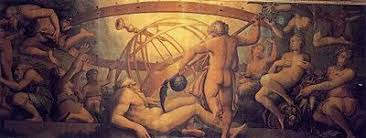
Long-count Calendar
How to number years across a span? Regnal years was most common in antiquity: year 1, year 2, year 3 of ___ king. Also, king lists detailed how long ___ ruled. The Ancient Near East (ANE) excelled at chronologies; we have some that go back to Sumer. That’s pre-Bronze Age. The span of some reigns can be deeply problematic (e.g., mythical), but we have the lists. Fun note, Neo-Assyrians named years by its major military campaign. Tells us a lot about them, no?
What about places without kings? Greece, Rome, Carthage?
The Greeks had several systems, internal and panhellenic. Internal systems often dated by the name of a prominent city magistrate. In Athens, that was the eponymous archon, in Sparta, the eponymous ephor, etc. The panhellenic system used Olympic years. In Dancing with the Lion, if you look at date plates before sections, that’s what I used. It’s a 4-year system, so, “In the year of the 97th Olympiad,” “In the first year of the 97th Olympiad,” “In the second year…,” and “In the third year…,” then we’re to “In the year of the 98th Olympiad…” In modern annotation it’s Ol. 97.1, Ol. 97.2, Ol. 97.3, Ol. 97.4. From (our year) 776 BCE down into the Roman Imperial era, the Olympics made useful anchor dating for the eastern Mediterranean (Magna Graecia).
Rome had its own system: two in fact. It counted years by both consuls, but also AUC = ab urba condita … “from the founding of the city.” Carthage used a similar system involving their two senior Judges for their senate.
When it came to “world histories,” authors such as Diodoros Siculus used several systems: Olympiad, Athenian archon, and Roman consuls. It gets a bit unwieldy, but is about as universal as we have for the Med until Christianity took over everything.
Yearly Calendars
Much of the ancient world used lunar (354 days), not solar (356 days) calendars. Yes, they knew a lunar year didn’t line up with the solar, and they used “intercalation” to fix it, avoiding summer festivals being celebrated in winter. Either a 13th month was needed every 3 years, or they added a few days to months here and there, making a “lunisolar” calendar. We have an intercalated day in our own calendar: Feb. 29th in Leap Year. To fix a calendar, however, an “anchor” is needed. This anchor is usually a solstice or equinox, which may (or may not) correspond to their New Year.
Our modern (Western) world places New Year’s in the dead of winter. But many pre-modern calendars put it in spring. Makes sense: life renews, it’s a new year. The Babylonian New Year was decided by the spring equinox—first new moon after—which pattern affected most of the ANE.
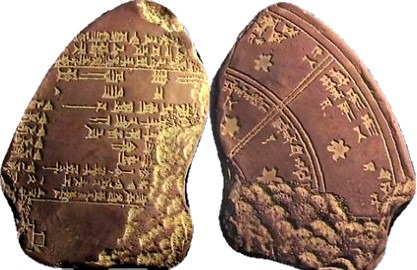
The Hebrew New Year (Rosh Hashana) is in autumn, but their first month (Nisan) is in spring. (They also have a New Year for Trees! Tú bish'vat. How cool is that?) Wanna know when your Jewish friends are having a holiday? Use Hebcal, the gold standard.
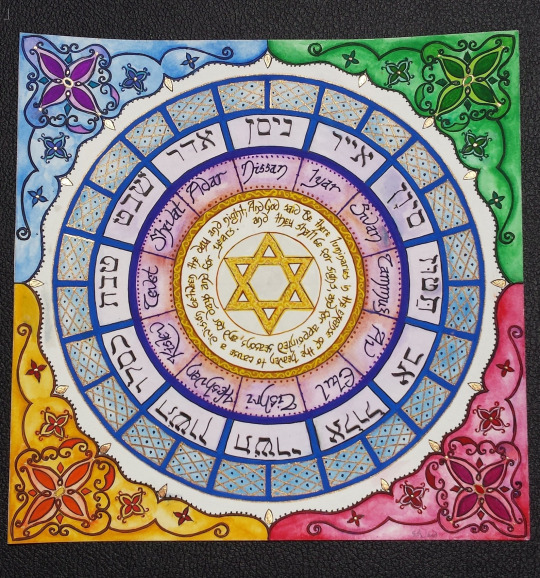
MANY ancient cultures have more than one calendar running at a time. So do we. Working in the uni, I have the “normal” year, but also the “academic” year to keep up with.
Despite the dominance of certain early systems like Babylon, counting the new year was specific to a region and people, and their religious traditions. No single Greek new year tradition existed. Both Delos and Athens used the first new moon after the summer equinox: early July. The Macedonian calendar seems to as well, so Alexander was born in the first month of the year. Other city states were different. I’ve forgotten most but do remember Sparta’s is in autumn because their new year almost falls on my birthday.
Remember, although we today talk about “ancient Greece” as if it were a country—it wasn’t. There was a landmass called Hellas, but each city-state was independent, and had its own laws, gov’t, coinage, and religious cult. Too often “Greek” winds up being conflated with “Athenian,” because we happen to have the most evidence from ancient Athens. But both Athens and Sparta were weirdos. Corinth, Thebes, Argos, Mytilene, Cos, Eretria, Miletus…all were a lot more typically Greek in their gov’t systems, etc. There were also 3 (or 4) different branches of Greek: Ionic-Attic, Doric, and Aeolic. When we talk about reading the “ancient Greek” language today, most people mean Attic Greek, or even Koine Greek (Hellenistic era common Greek).
That means every city-state had its own calendar, connected to its own festivals.
In fact, most city-states had several: sacred, civic, etc. Athens had a 12-month lunar calendar for festivals, but a 10-month civic calendar corresponding to the 10 tribes for Assembly business. Originally, they had only 4 tribes, not 10, so political changes meant calendar changes.
In each city-state, month names were derived from the major festival for that month. We have the complete month names for only a few: Athens is one and (fortunately for me) Macedon is another (specifically Ptolemaic, but it’s likely the same as the Argead). Below “Ancient Greek Month” REALLY means “Athenian month,” which annoys the hell out of those of us who don’t consider Athens the be-all and end-all of Greek history!
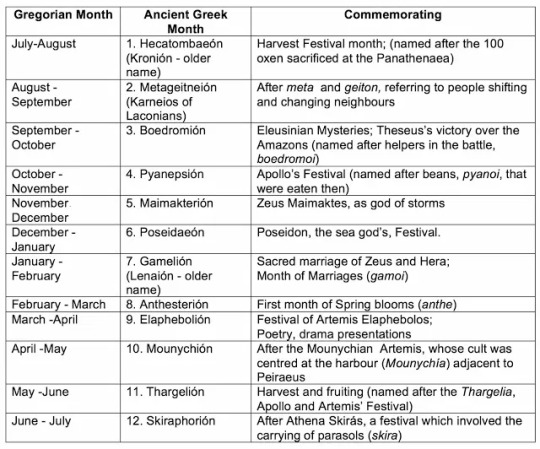
Because their months were lunar, they bisect our months, e.g., July/Aug = Athenian Hekatombian or Macedonian Loos [Alexander’s birthmonth], Jan/Feb = Athenian Gamelion or Macedonian Peritios [probably the month that gave Alexander’s favorite hound his name: Peritos]. Likewise, as the Athenian new year began in midsummer, dating ancient events also bisects. You’ll see 342/1 to designate the year from July of 342 BCE to June of 341.
As mentioned, most places used lunar months as the most basic time-keeping, but the moon isn’t the only way to make a “month.” Rome originally had 10 months of 30/31 days, adding 2 later, which is why our 12 months have Romanesque names.
Just remember: NO UNIVERSAL SYSTEM for months.
What About Weeks?
A seven-day week is borrowed from the Jews via Christianity. Both Jews and Egyptians had a dedicated day of rest. (For Egypt, the 10th day.) In most places, however, days off were festival related. Every month had festivals, which might last from half a day to several days in a row. You worked…took off for a festival…then you worked. No regular day of rest. (For the modern weekend? Thank unions and the Labor Movement!)
How did others subdivide a month? Athenian months were c. 30 days, divided into 10s: 1-10, 11-20, 10-1. Yup, the last is backwards. But dating also counted waxing and waning moons. So the new moon began a month, the 7th of the month would be the 7th waxing moon, the 24th the 6th waning moon. This is the Athenian system. Other city-states are less clear, but probably similar.
Romans had kalens (1st), nones (7th), and ides (15th). Nundinae (market days) means 9th, but were really the 8th day. The 7-day week is late Imperial and, again, owes to Christian take-over of Jewish weeks.
Most systems had “auspicious” and “inauspicious” days for religious activities, civic activities, and business activities. Don’t start anything on an inauspicious day! (These were manipulated, especially in Rome, but that’s a whole different discussion.) The closest modern equivalent I can think of is Mercury Retrograde. 😊 Although in modern Greece, signing a contract on a Tuesday morning is bad juju, or May 29th. Constantinople fell on a Tuesday morning May 29th, 1453. We might, in America, consider 9/11. Who wants to open a business on 9/11?
The Horai (The Hours)
When did the day begin? Again, the ANE and Med are different. In the ANE, day typically began at sunset. So yes, that’s why the Jewish shabbat starts at sunset on Friday and lasts till sunset on Saturday. (If you didn’t know, the Jewish “day of rest” isn’t Sunday, but Saturday.)
For Greece and Rome, et al., day began at dawn. Each day was then evenly divided between day and night, so there was no standard length of an hour. It depended on the time of year. Each half had twelve hours, subdivided into 4 groups of triads. Originally in Greece it seems there were only 9, not twelve, but they increased to match the lunar months. The division of 4 groups of triads also yielded the 4 seasons of 3 months each. Hora was initially a season, not an hour.
In any case, dawn was always the first hour, noon the 6th, sunset the 12th. Same deal for night (twilight, midnight, pre-dawn).
This is great for military and civic purposes, but most people tended to refer to daytime divisions more generally: dawn, midday, etc. And there was nothing like minutes or seconds. That’s totally modern. Closest, they might come would be to count “breaths.”
The gnomon (sundial) was the chief way to measure hours, as it matched longer or shorter days. But it’s kinda hard to use a sundial at night, or on a cloudy day, or inside. Night hours were approximate.

The water clock (klepsudra) was first popularized in Greece in courts and the Assembly (to time speeches), but spread to other use, for inside or on shady days. Yet water clocks are unwieldy to carry around.
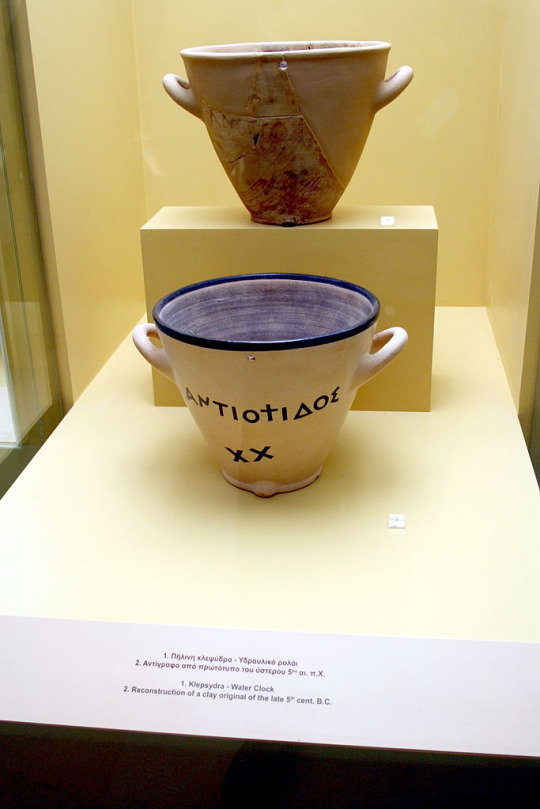
The Romans did have portable sundials (below), but again…needs the SUN. Btw, I should add that sundials aren’t only a Greco-Roman thing. The Chinese had them too. By contrast, the sand-clock or hourglass is a medieval invention. Won’t find them in the ancient world.
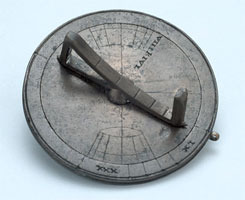
#time-keeping#calendars#time in the ancient world#months in the ancient world#ancient Greece#ancient Rome#ancient near east#Jewish calendars#sundials#the Horae#The Hours#Classics#ancient history#ancient Mediterranean history#asks
95 notes
·
View notes
Note
Hiiii Lynn 😊 I realize it is not funny question friday but I was thinking about this last night and wanted to ask before I forgot (you don’t have to answer right away). But I was thinking about the gods in your story and it made me wonder if there were any holidays or like special occasions in honor of them? Or events that started out as being in honor of a deity but like evolved into something else? (Sorry, i realize this is a hyper specific question. I was just curious lol)
okay this is super exciting for me and i thought about this for like a full twenty four hours before sitting down to answer lmao
as you may or may not know, I sat down and made my own calendar for this world because I'm insane and have too much time on my hands. It has thirteen months and the lunar cycle lasts 26 days and every month has 28 days except the first and seventh, which both have 29 :)
back in the old days, like when the original gods existed, every full moon was a “Feast Day” for the god of the month they represented, though the term was considered outdated and nobody actually did any feasting. For example, the first month of the year is the month for the god of creation (whose name is/was Juselan if you care to know), so anyone who was a particularly devout follower of that god would go to one of their temples the morning of the full moon to pray and leave an offering. IF you were exceptionally devout, you might spend the entire day there to devote yourself to their name. The god of good fortune was the most popular and people would go hard as hell to win their favor because who doesn't want to have good fortune!!
Obviously a thousand years after an entire gaggle of gods commits ritual suicide, nobody gives a fuck about feast days anymore. HOWEVER, their names and legend still exist in one way or another (and some people even believe they're still alive and are just. sleeping?), and the months of the calendar are still named after them for the most part, though of course there are lots of differences in languages and across the continents. (Yixing was born under the fourth month, which is the old god of fortune's month LMAO it also means that he is an aries according to our star signs and frankly I have no clue what that means because i only know anything about my own sign which is the SUPERIOR aquarius)
AND there are holidays that morphed over time and kind of became their own thing. Like duh new years is still a huge deal (for several reasons) and the solstices and equinoxes and what not, but there are other big holidays too. There's a holiday in the spring that used to be basically like. a huge festival lasting several days to honor the god of creativity and the arts, and it has since become like. a big holiday to celebrate the end of winter and to get hyped for springtime. (in the old days it used to be Ciaran's favorite holiday because he got to go do hot girl shit and be extra famous for a week because of his profession lol)
There's also a major holiday celebrated around the world in the fall that used to be a celebration of the god of health and decay that has become more like a... “we have to get together and celebrate a good harvest but also ward off the evil spirits that come in the long nights of winter” situation. It used to be a RAGER of a holiday. like a full week of drinking and eating and socializing and having a ton of fun and all around hedonism to thank the god for being generous in keeping your health (but also to like. beg that he doesn't let you wither away in the cold months). It was like the BIG travel holiday. Kind of like our lunar new year holiday or even Christmas except without exchanging gifts lol
ONE THING I haven't come up with a good gift-giving holiday lol I know every culture around the world has a few, so it just makes sense to make one up. That can be my next big worldbuilding project. (That and making up my own zodiac lmao though I do have a couple constellations made up already....)
ALSO I feel like it's worth noting that like. before the gods had their tantrum and all fucking DIED, a lot of people just weren't religious. I mean. Everyone knew the gods were REAL. There was no debate of that, but a decent amount of the population of the world just Did Not Care. It's like they knew the gods didn't give a fuck about the people on the planet (because the world was kind of a shit show), so they didn't bother taking time out of their day or month or whatever to stop in at some temple in the city and pray, because they knew whatever they said would be ignored. On the other hand, there were also just as many people that were VERY religious. (Ciaran and Anwei's mom falls into this camp lol) I'm talking, the kind of people that would spend the entire damn feast day at the temple desperately praying, making all kinds of offerings, building a shrine in their home to worship other days, etc etc etc. There were people who would gladly wage wars in the name of whatever gods they favored most, and then just as many that didn't give a flying fuck about which god's month it even was.
AND it's worth noting that even after everything blew tf up, there are people centuries later that still worship the old gods and are really really invested in coming up with a way to either reawaken them or to find new ones to take their place. And these people go hard as hell on the old holidays and have pushed many many times to reestablish those and feast days and all kinds of shit. And naturally everyone is like. uh. you can SEE where they died. You can fucking LOOK at the scars on the earth my dude. They're not coming back!!! Granted, like. 99.99% of people don't know that there are NEW ones that sort of took their place, but that's neither here nor there. There's some weird mythology there, but I'll save that for another time!!!
So uh. Short answer is yes there are holidays (and I've only come up with a few as of yet) that were very specific to an old god that became something else entirely. And there are also some entirely new holidays that are specific to continents that I've only sort of started to work through lol
#oc talk#i apologize in advance for this making ZERO sense#i just put down whatever thought entered my stupid little head lmao#this is something else i could talk about forever lol#bc in my head each god that represents a month is important and there's a very specific reason they're in that order and blah blah blah#all stuff that matters to basically nobody but me! but i'm having fun and that's what matters
2 notes
·
View notes
Text
‘Why do Christians celebrate Christmas?’
Two members of the Aldor* Bible storying project from Southeast Asia share what Christmas means to them.
June*:
The first Christmas I celebrated was when I was young. As far as I can remember, I was probably involved in dancing and singing. Children in my village really loved joining in the Christmas dances. My parents became Christians when I was young, so I am in the second generation of believers. My grandparents, however, are all non-believers. We have had the New Testament in our language since 2005.
In the area where I grew up, Christmas was the biggest celebration all year. We understand Christmas to be the time Jesus came in human flesh and was born to save people from their sin. Everyone really looks forward to Christmas. Families want to get together. Even if we’re far away, we want to go back to the village for Christmas.

Where I grew up, the Church prepares for Christmas well in advance. Starting in November, every home saves as much money as they can to be part of the celebration. People who don’t have much money work hard to plant vegetables and fruits in their fields, or raise chickens so they can be a part of the celebration as well when Christmas comes. Before Christmas, people practise songs to go out carol singing.
We have had the New Testament in our language since 2005
1st December is a holiday we celebrate at church. We go carolling to every house in the church. Some unbelievers will even go with us if we invite them. Every house prepares something for the carollers to eat. We always have full stomachs when we are carolling! Carollers bring small presents (often a calendar) for each house. They sing and announce Jesus’ birth and then pray together. It’s a really happy time. One thing I don’t like, though, is that the people who are carolling collect donations at every house. It can be very hard for poor people.
For Christmas day, if there is just one church in the village, they celebrate all day and night. But if there are many churches from the region getting together, the celebration lasts around two whole days. When many churches gather to celebrate, the village hosting the celebration has to prepare and provide everything, but every church involved contributes to the Christmas offering.
Starting from 24th December, we have a worship service. After the service, the youth from each church present dances, songs, and dramas. On the morning of the 25th, we have another worship service.
Some people just write their own name on their present!

To make special food for the Christmas celebration, we kill a pig or a cow to serve to everyone for the feast. We also give Christmas presents to each other. We cut a Christmas tree in the forest in advance. We set up a large stage for the Christmas celebration and put the tree there; then we hang presents on the tree. People write a note on each present to say who it is for; parents give presents to children, etc, (but some people just write their own name on their present!)
In addition to this, during the Christmas season, sometimes the youth group leads outreaches in other villages with dances, music, dramas, and preaching. During the Christmas season, we usually invite non-believers. Because they are interested in Christian dance, music, and drama, they will come and see what we are doing.
Ruth*:
I remember something really well, from when I was about 12. On the last night of November, the youth didn’t sleep. Before midnight, we wrote a Christmas greeting in huge letters on a 100-foot-wide main street downtown so that, for the whole of December, all the people passing in cars would easily be able to read it. And then we went from house to house singing songs and greeting people. When it was finally midnight, we ate rice porridge. Finally we closed with prayer for all the people who would be celebrating Jesus’ birth throughout December.

Because most of the preaching we hear in December is about how Jesus came to the earth to save all people, we celebrate but make a lot of effort not to lose Christ in celebrating Christmas. Some churches choose topics like peace, joy, love, or grace and preach on these topics for the whole month.
For the whole year, we prayed and saved up to do outreach
Last year, our family went on a Christmas outreach trip. We went to a village in a part of our country where there are almost no Christians. This village has around 30 homes. My husband’s cousin moved there after getting married to a woman from this village. He had never told his new family about his God. When we asked why he had never shared with them, he said, ‘I’m not a pastor; I don’t know how.’
Also, since he is a newcomer to this village, and they are very strong Buddhists, he didn’t want to cause any problems. So my husband and I discussed with him and his wife, saying, ‘It would be good if we can come to your village and do something.’
For the whole year, we prayed and saved money to be able to do outreach there. When the December holiday arrived, and my son was out of school, we all went to the village. The first day we rested. We just took time to talk to the family and relatives and get closer with them. In the evening, they made their traditional refreshments and hosted us. It was really enjoyable.
The next day, on December 23, together with the owner of the home where we were staying, we treated the whole village to the traditional soup. They knew that we were Christians, and invited everyone by telling each other that the Christian family was giving away food. So many people ate the soup.
‘Why do Christians celebrate Christmas?’
I hung out where all the women were gathered. My husband stayed in the guest room where the older men and married men were talking. Up to that point, we still hadn’t said anything about Christ. We had to observe the situation first. We were afraid to even start. It could get so bad we would be called in to the police station. But my husband and I, from our different places, were praying for the people eating together. How could they know about Jesus? How could we tell them?
While we were still praying and talking with them, one man asked my husband, ‘Why do Christians celebrate the Christmas festival? What is the reason they celebrate?’
And so we told them we are welcoming Jesus’ birth because he came to free people from their sins. People try to do good things to erase their sin, but Christ came and erased sin for us. With other examples, we explained in such a way that it would be easy for them to understand. They listened to my husband and were really interested. Even though they didn’t join the discussion, the women were sitting near circle of men, listening with interest. People started comparing it to someone with a son who is sentenced to go to prison, but then someone comes and gives a guarantee and sets him free.
Our family returned home joyfully, having accomplished our Christmas goal
I kept praying and was honestly just really excited. The money we used on this trip wasn’t wasted! These people had the chance to hear about Christ’s salvation!
The last morning before we returned to the city where we live, we handed out the tracts we had prepared. Our family of three was able to return home joyfully, having fully accomplished our goal of a Christmas outreach!

June and Ruth work as part of a team training Christians around their country to share Bible stories with their friends, family and neighbours. If you want to share the good news about Jesus too, why not give a gift today? Follow the link below to donate.
*Names changed for security reasons.
Go to the article
0 notes
Text
Pushkar & Jaipur


Starting our day early for our 4hr drive to Pushkar.
Our driver, Hassan sent his buddy and fellow cab driver, Raeez to go with us. I’m not a fan of these kinds of surprises but it ended up being a nice change of atmosphere. He was a quieter, chill dude and unlike Hassan who sometimes tries to sway me away from my itinerary while suggesting other things that are usually very touristy. Raeez, who even though doesn’t speak much English, is my favorite because he is kind, fuss-free, doesn’t have schemes up his sleeve and is definitely quirky in his own little way ;-)
Asked why Hassan couldn’t make it, Raeez said he found a good deal with an older tourist couple and will be touring them around Jaipur for the day.

The drive was long but smooth. The farther we get, the quieter and less congested the streets are. But because of less traffic, the switching of lanes has become more dizzying as your driver is picking up speed. Surprisingly, none of us got sick (literally) of this. I had an entire collection of essential oils for all sorts of sickness and we never got to use the one for motion sickness!


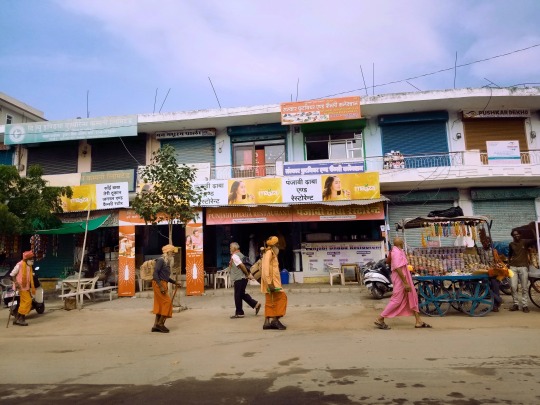
I’m very captivated, almost bewitched by the sight of these holy men


First camel sighting! Soooo exciting!!!

Pushkar is unlike anywhere else in Rajasthan. This small, yet enchanting town has a unique mix of mysticism, religious fervour, and magnetism. Life here is so simple and I got the most rural feel from this place compared to all the others that we’ve been to.
The town itself encircles a holy lake, thought to have been created when Lord Brahma vanquished a demon, Vajranash, using a lotus flower. The lotus flower fell to the ground, creating Pushkar lake. To this day, the town contains one of the world’s only Brahma temples, making it a prominent Hindu pilgrimage town that devout Hindus should visit at least once in their lives.



Each year, once the month of Kartika (a popular Indian feminine given name derived from the god Kartikeya, which means "bestower of courage") arrives, 200,000 people descend on Pushkar, bringing with them 50,000 camels and horses. The city is transformed into a colourful, heaving mass of animals, tourists, mystics and musicians and traders arrive to flog their livestock.
Although business is the main order of the day, once the fair starts, a vibrant and diverse cultural program draws in the crowds; snake charmers, wedding parades, sports and competitions for ‘best moustache’ or ‘most beautifully decorated camel’ fill up the schedule.
Aside from all of the festivities, Kartik Purnima is also the time when thousands of pilgrims arrive in Pushkar to bathe in the sacred waters.
The fair takes place in November. Lucky us? We sure feel like it. I kept blurting out “Alex, how are we in Pushkar, in the middle of a camel fair right now?!”



According to the internet, there are about 400 temples in Pushkar. We saw a handful, randomly picking out colorful or enigmatic, old looking ones to enter. The town hums and vibrates to the constant sound of chanting, drumming and incense-fuelled puja (act of worship).



Pushkar is considered sacred, so many rules that apply within India’s religious sites, apply within the town as a whole.
Consumption of alcohol, meat or eggs is not allowed within 2 km of the Brahma temple. Not that this affects us since we couldn’t eat anything here anyway. Most of the food spots are stalls, kiosk, or in tents and I didn’t want to risk it. Foreigners are always reminded that when in India, only eat at places that look like they have a legitimate kitchen and absolutely not a makeshift one, where many other foreigners are going, places that look clean and that observe proper sanitation, etc.
Everything looked yummy but one can never be complacent with picking out restaurants. We never let our guards down when it came to protecting our bellies!
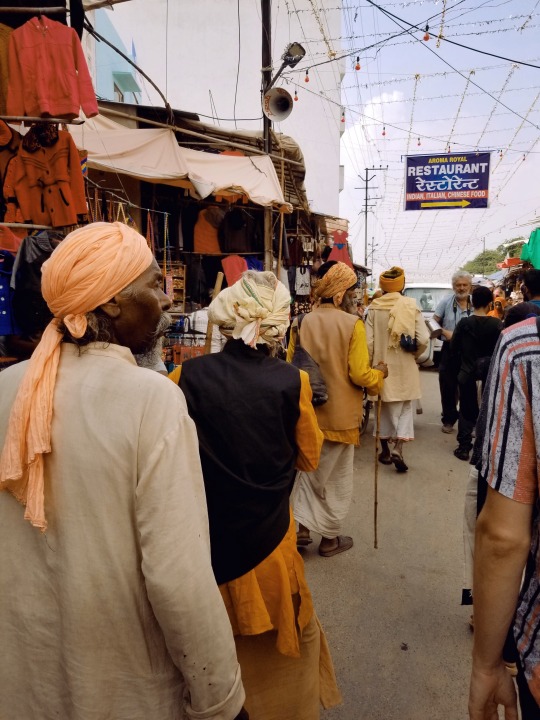
We spent all early afternoon getting lost and weaving our way through a maze of stalls selling all kinds of goods from pots and lamps to spices, accessories, clothing, handcrafted bags and shoes, instruments, tapestries, etc. Admittely, I have a weakness for moments like this but I kept reminding myself that we really don’t have any room in our luggage for a shopping spree. I equally hated and loved being restricted in a haven like this, surrounded by all things pretty, exotic and cheap.
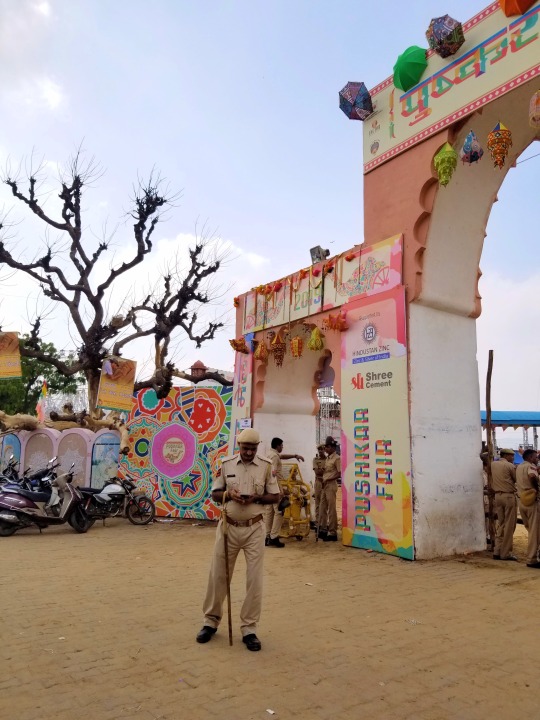
We spent too much time wandering around the bazaar and temple area with the intention of finding where the camels were kept. Finally we made our way to a more open space and found the stadium.
Sadly, they had the camel shows earlier during the day so we missed it. No losses here though. We were very much satisfied with all our camel sightings and encounters.

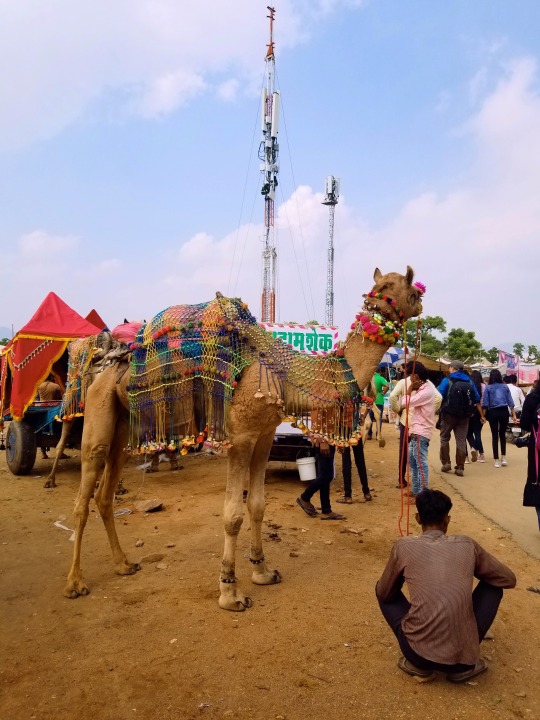
The Pushkar camel fair is a livestock festival which happens annually and falls on the Kartik moon according to the Hindu astrological calendar.

Camels from all over Rajasthan, Punjab and beyond will be showcased here and to in an effort to make them more alluring to prospective buyers, they’re decorated in all sorts of colorful pom-poms, elegant cloths, anklets, flowers and flair!

We were offered a lot of camel safari rides but refused each time. Out of the question! Our driver couldn’t understand why. He was upset but in a funny and cute way when he later on asked if we did the infamous tourist activity. We explained to him our stance on animal cruelty, even though we are well aware that the lines on this subject may be blurred and crooked in places and cultures like India’s. But we still tried. I think he understood what we were saying but stiil... ;)

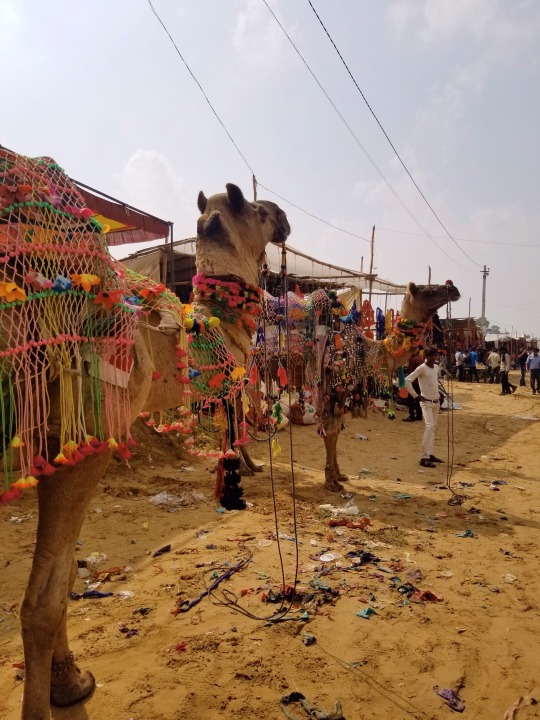
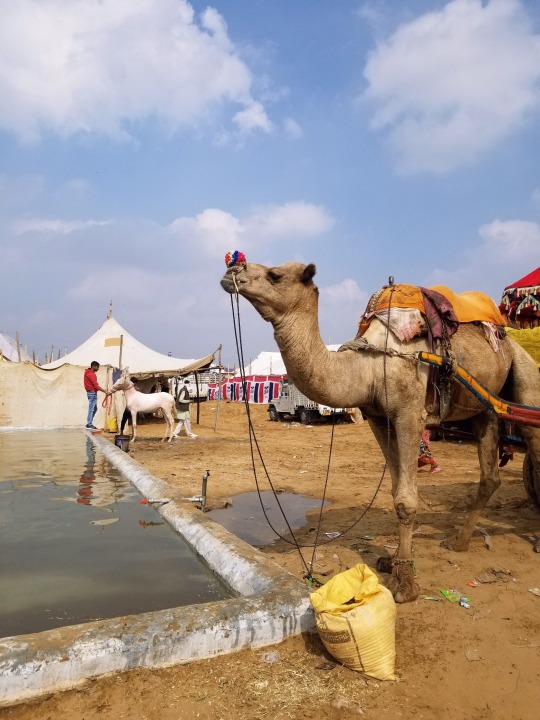


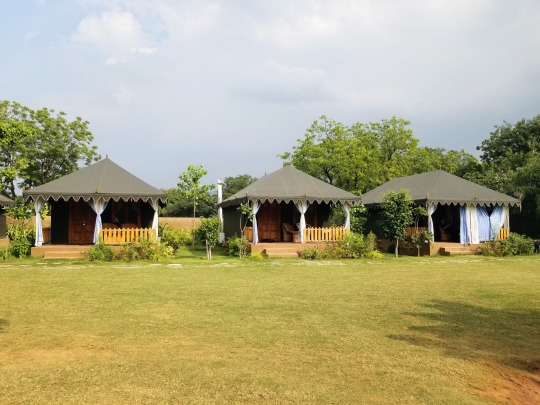


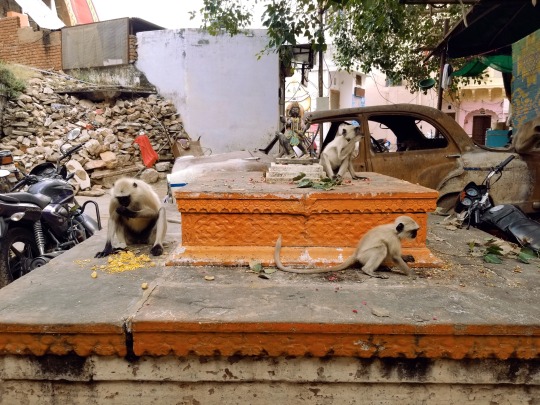
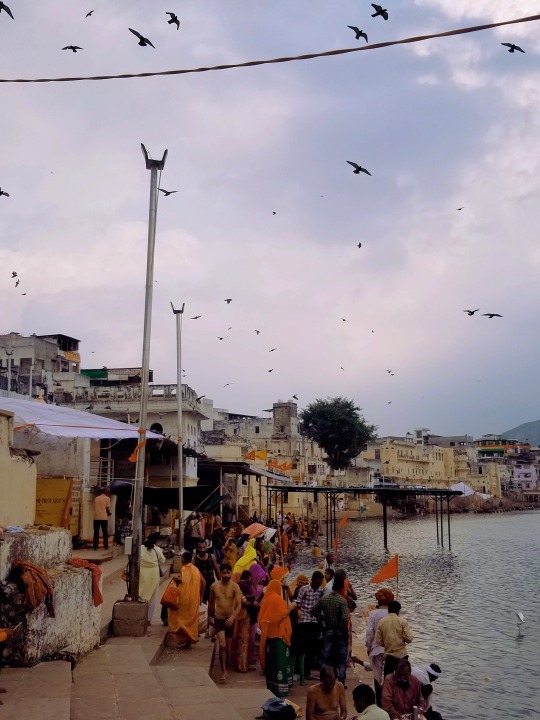
Kartik Poornima is the full moon day and the main day of the fair. This is also where one can catch hundreds of Hindus bathing in Pushkar’s holy lake. The legends say this is the day that Lord Brahma, the creator of the world in Hindu mythology, created the very lake which still stands today.
This was moments before my attention was called by the city guards to tell me that photographs are prohibited. It was only then that it dawned on me.. Of course, because people are bathing here. We people-watched and roamed around for half an hour, observing men and women of all ages and coming from all walks of life praying and doing their rituals.
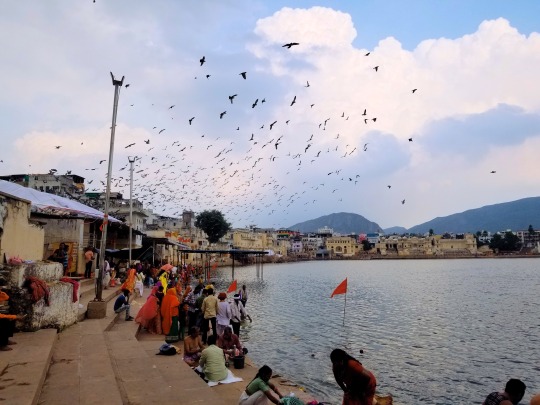


Wrapping up our Camel Fair adventures in Pushkar

Back in the cab

Budha Pushkar
As per our driver’s suggestion, we stopped by this prayer stadium and sacred ponds. It was not a popular place as we did not see many tourists or locals. So, in absolute silence we walked around and maybe have taken a moment to just gaze at the jade waters and majestic hills surrounding it. A nice way to end our Pushkar adventures before heading back to the city.

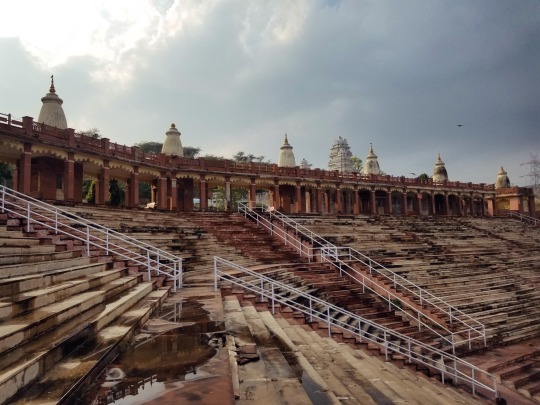





Good morning! Another full day in Jaipur to explore!


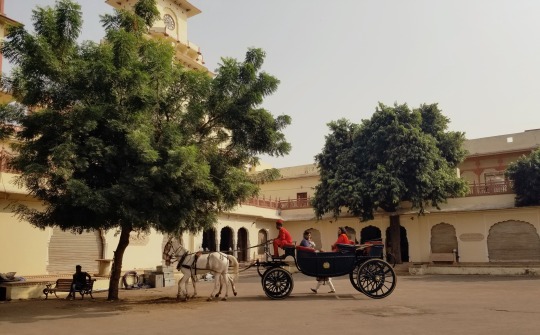
First stop: City Palace
Jaipur is often referred to by one of its many nicknames; The City of Gates, The Pink City or The Paris of India. However, the present-day metropolis that is modern Jaipur has been built on centuries of history. This is the ‘Land of the Kings’, the realm of maharajas, where majestic forts and opulent palaces are more numerous than anywhere else in India. No wonder why my Disney-adoring little girl heart has been borderline obsessed over seeing this part of India. This day is one of the main reasons I voted for Jaipur to be a part of our trip.

The splendors of Rajasthan’s past are still here to explore. At the centre of Jaipur, the elegant City Palace, still housing the former royal family, is an island of tranquillity.
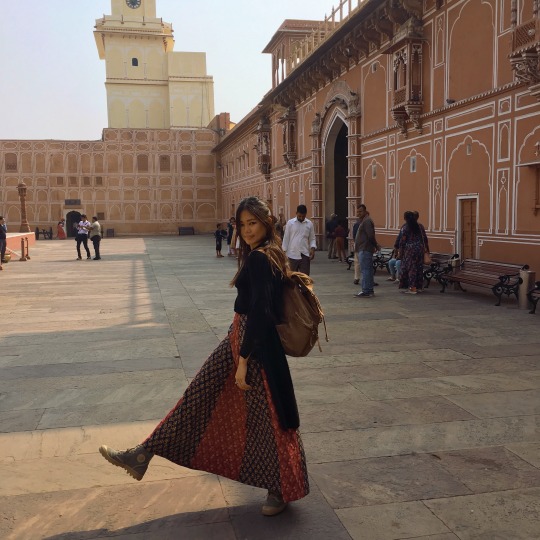

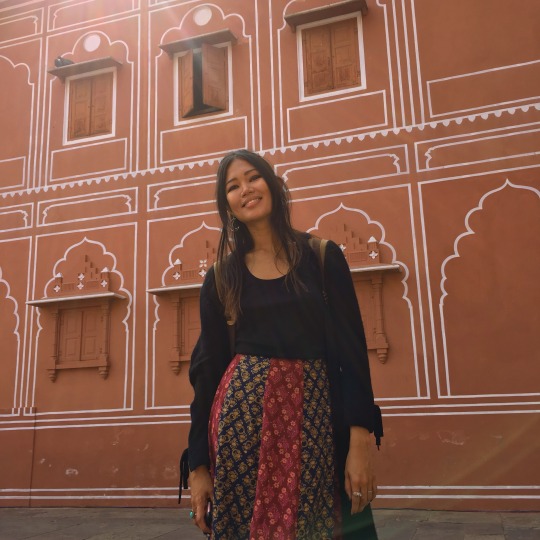
Here you can enter through the pink outer walls to find a maze-like complex of gardens, courtyards, halls and buildings.

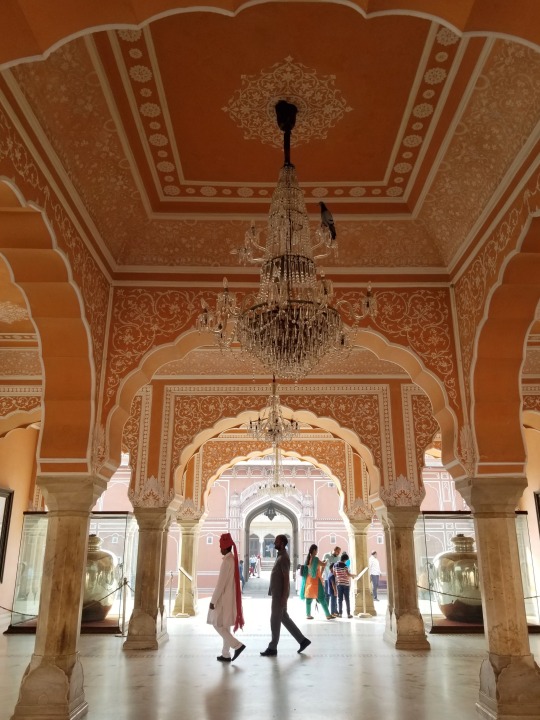
Sarvato Bhadra
The Sarvato Bhadra is a unique architectural feature. The unusual name refers to the building's form: a Sarvato Bhadra is a single-storeyed, square, open hall, with enclosed rooms at the four corners. One use of the Sarvato Bhadra was as the Diwan-e-Khas, or the Hall of Private Audience, which meant the ruler could hold court with the officials and nobles of the kingdom in a more private, intimate space than the grand spaces of the Sabha Niwas in the next courtyard, which was open to more people.
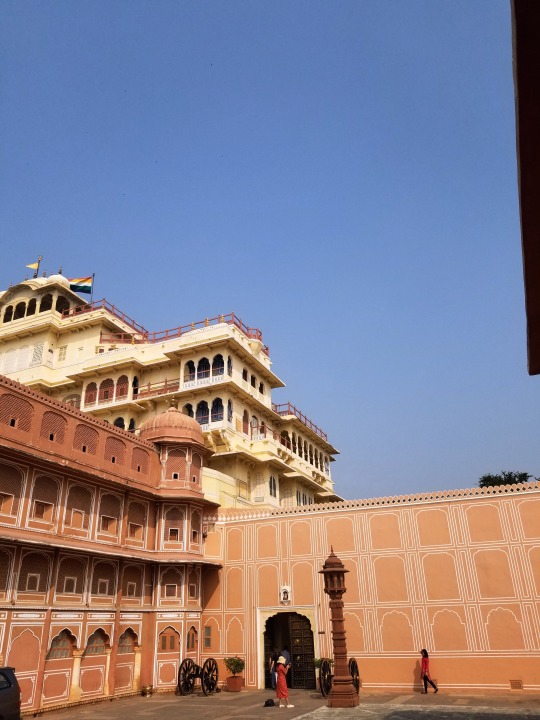


Several rooms

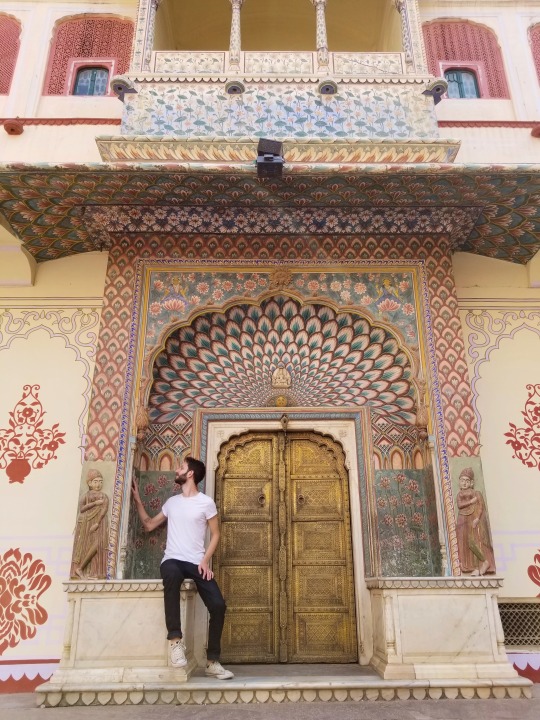
Pritam Niwas Chowk
Here, there are four small gates known as Ridhi Sidhi Pol. These gates are adorned with themes symoblising four different seasons and Hindu gods. At the centre, above each of the gates are miniature carved reliefs in marble dedicated to the respective gods. All four gates have beautiful, embossed brass doors.
I snapped 2 of 4 having grown tired of waiting in line for the rest of our fellow tourist to finish and move on



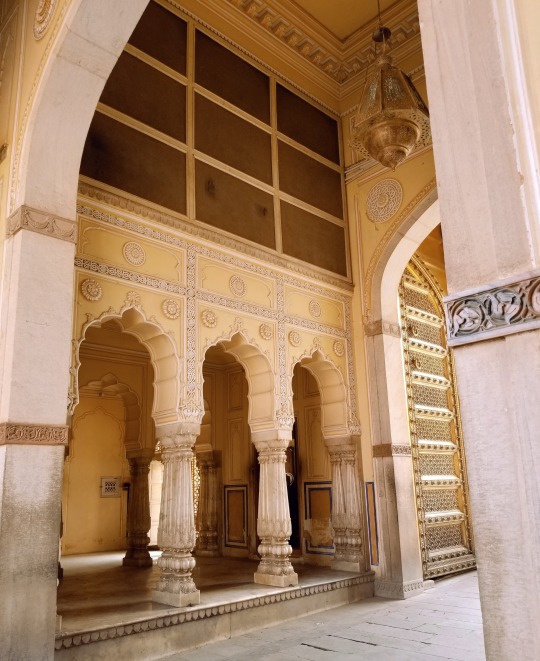


Mubarak Mahal
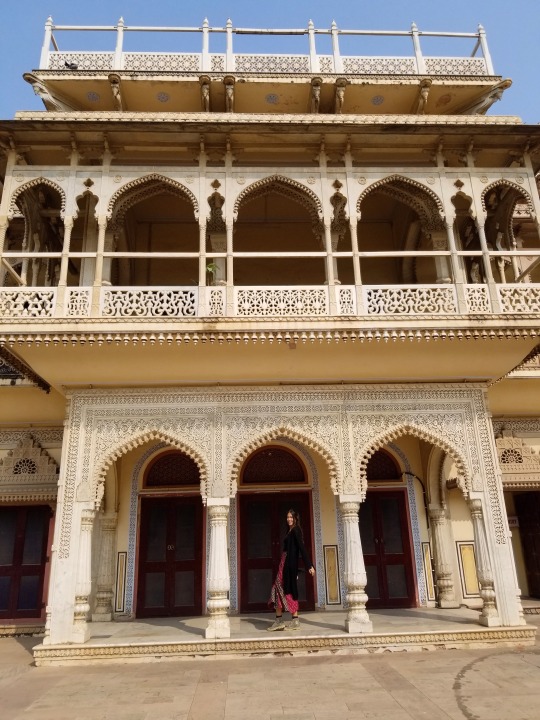
There is no doubt that the grounds are an architectural masterpiece. From the pink sandstone architecture in the pavilion, the intricate design of Mubarak Mahal, and the chiselled marble stone structures, the city palace is both elegant and artistic.

Leaving the City Palace on foot, we set off to Hawa Mahal. Surprisingly, Google Maps didn’t let us down. I successfully got us there without getting lost. I didn’t tell Alex but my heart was dancing, bursting with pride and satisfaction.




Absolutely adoring the scenes here
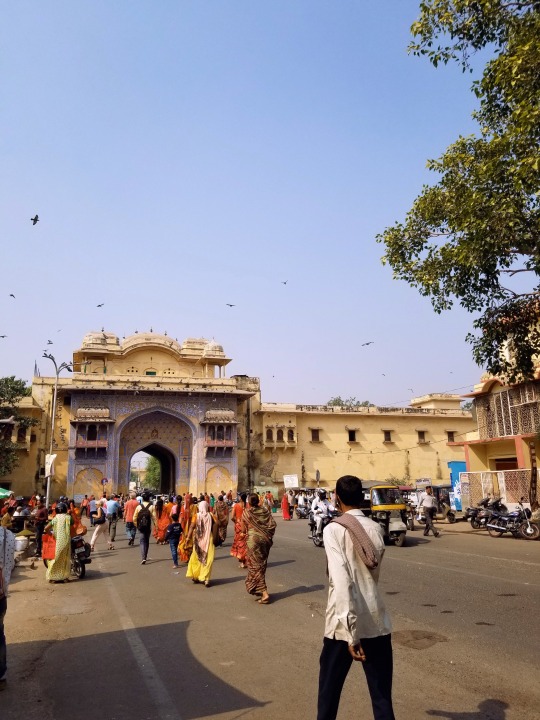
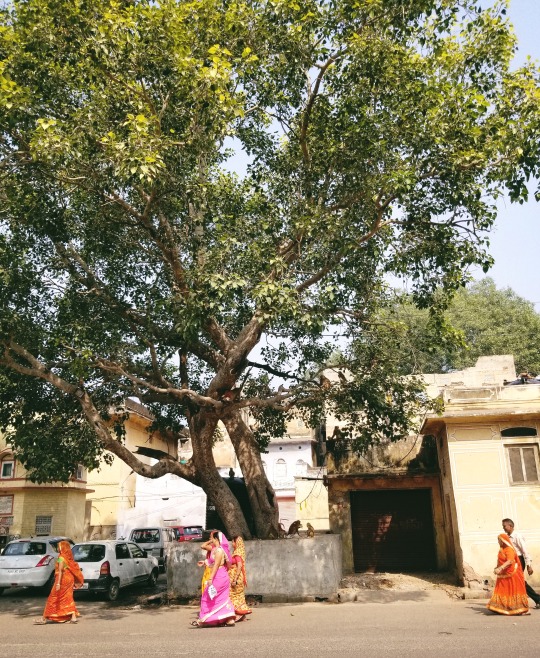
This was a photo snapped after seeing the monkeys squabbling. As we drew closer, we realized that they were shrieking and yelping at something or someone to the opposite side of the road, where a dozen middle-aged tourists were loving and snapping the monkeys in action.
Our theory is that perhaps one of the merchants hurt them in an effort to drive them away from the food/goods that they are selling. We all know how these Macaque’s can be aggressive and are expert thieves. Still not cool to hurt them though :(

The Hawa Mahal / Palace of Winds
We made it! I am shaking and my pulse is picking up again! The marvelous honeycomb facade of the Hawa Mahal looms over a traffic-clogged thoroughfare. The city’s pink-tinted walls are punctuated with 7 imposing, decorative gates. Look further to the right and you will find sprawling hilltop fortresses, Escher-like step wells, and temples left to the care of roaming packs of monkeys.

One of Jaipur’s most iconic and distinctive landmarks, the Hawa Mahal was constructed in 1799 by Maharaja Sawai Pratap Singh as a way to allow ladies of the royal household to watch life on the streets below without being seen themselves. The five-storey tall honeycomb hive facade consists of 953 latticework windows for the ladies viewing pleasure.
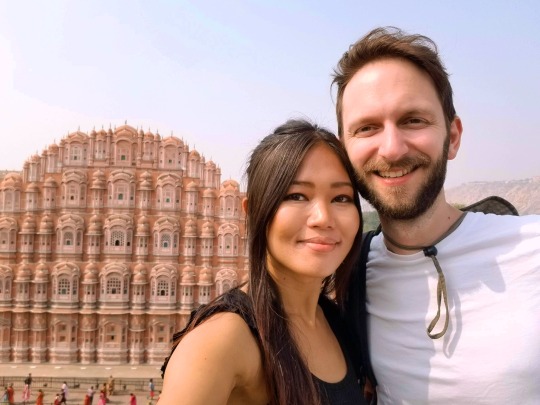

For once, we decided to resist yet another tourist trap so we skipped paying for the Palace entrance fee and opted for a more underrated experience. Having googled another way to appreciate the Hawa Mahal, I led Alex to the opposite side of the street and looked for the entrance that would take us to the the Wind View Cafe which have absolute prime spots for viewing the structure’s magnificence to our hearts’ content. Or more like to my heart’s content. I love this day!!!
While trying to figure our where the cafe’s entrance was in the street level, I had another encounter with a young fellow. He and some others, like clockwork, came up to us. I asked if this door leads to the cafe, pointing to the entrance where my GPS brought us. He said yes and went ahead, taking the stairs up before I could say there’s no need to accompany us. On our way up, I thought “Ugh, here we go again. He’s not gonna let us get away without any kind of scheme or something”. It was a very narrow, tight squeeze climb with several flights of winding stairs. He stopped at the second to the last level and directed us to the Tattoo Cafe. I said we were going to the Wind View Cafe. He was being pushy so I stood my ground. He saw that I refused to be swayed and meant it. This had him upset and started acting sour. He says “You come to our home and you do this to us. You are not a good person”. Sounds familiar. Right away, I realized this is a formulaic dance of intimidation and mind games that some of them pull out from their back pocket in situations like this. Again, I apologized to him saying I didn’t mean to offend, explained my side while looking him in the eye. He left without another word. But the unwanted energy sure was lingering and thick as the smog outside.

The city’s bustling streets burst with colour and chaos. Cycle rickshaws weave among clouds of exhaust and soot as they dodge camels, cars and the occasional dawdling elephant. Swarms of motorbikes honk and buzz through the city’s vibrant marketplaces and grand gateways. Not the most relaxing breakfast with a view but we’ll take it!


Heading back to the City Palace to meet with or driver. Another mini adventure because we did not exactly have the name of the spot where he said he’d wait for us. I went by my memory of the small pocket where he said was a parking lot for cabs, marking it in my mind being remotely close to the Jantar Mantar, another tourist spot we opted out. But walking around, I realized that everything started looking alike. If we weren’t pressed for time, I wouldn’t mind getting lost but OMG, I have a serious itinerary and I wanna hit all the remaining spots before the day ends please!! This is our last day in Jaipur, if I haven’t mentioned that already!!!
After about 10mins of me oficially declaring to Alex that I think we’re lost, two girls passed by. I asked, pointing to a direction we haven’t tried yet, if the Jantar Mantar is that way. Giggling they said yes, I thank them with two fruit juices from our backpack and carried on. I wonder what was so funny? Haha!

Jal Mahal
It says a lot about the sheer quantity of beautiful buildings on display in Jaipur that the Jal Mahal, or ‘Water Palace’, isn’t overrun with visitors peering across Man Sagar Lake in the hope of glimpsing it. In any other city, it would be the main tourist draw. At the moment, the palace is undergoing extensive renovations meaning that it cannot be accessed but it is worth stopping off on the road if one is headed to the famous Japur forts.

Jaigarh Fort
An opulent structure built in the early 18th century in the city of Amer and is one of the major forts in Jaipur. It is located next to the magnificent Amber Fort. The main aim for constructing this fort was to protect the Fort of Amber from Invaders.


Breathtaking views!

Wanna see every nook and cranny of this stunning place


The Jaigarh Fort is a majestic stronghold built by Sawan Jai Singh II. This almost-intact fort is surrounded by huge battlements and is connected to the Amer Fort (also called 'Amber' Fort), with subterranean passages. Sadly it’s not accessible to the public.
The fort houses the world's largest cannon on wheels, a majestic palace complex and the assembly hall of the warriors known as 'Shubhat Niwas' along with a museum and an armory. Yeah, we skipped seeing the cannon part hehehe. We have better things to do!

The Amber Fort can be seen at the center of this photo.
The one thing you can see from anywhere in Amer are the huge red sandstone walls of Jaigarh Fort. It may seem endless from certain angles but it is only a total of 3kms long.
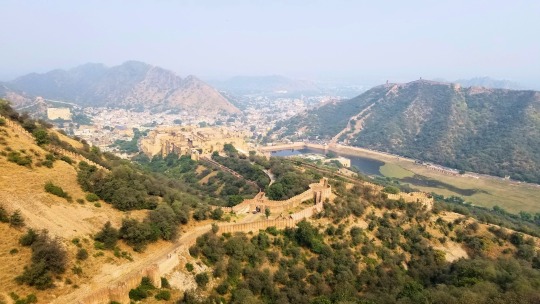
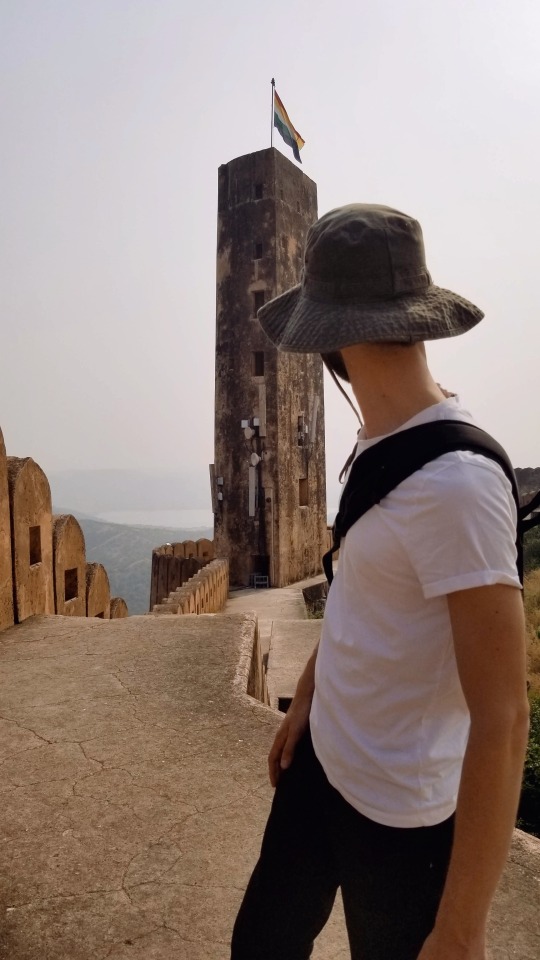


Shot and directed by Alex. I approve :)



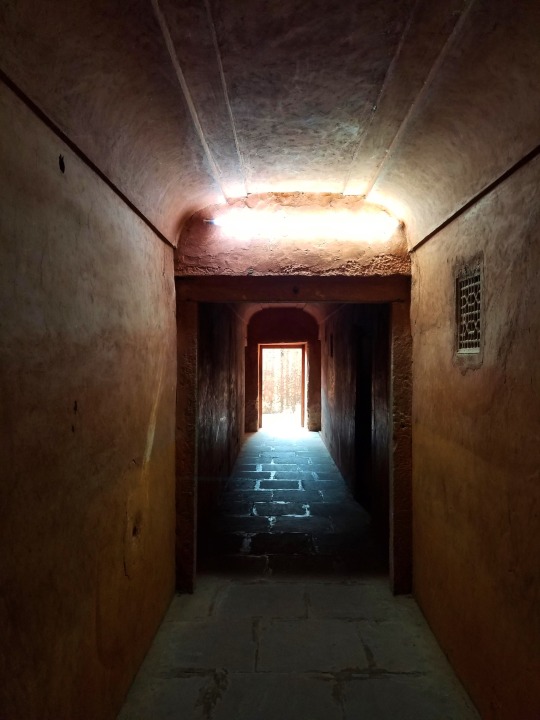

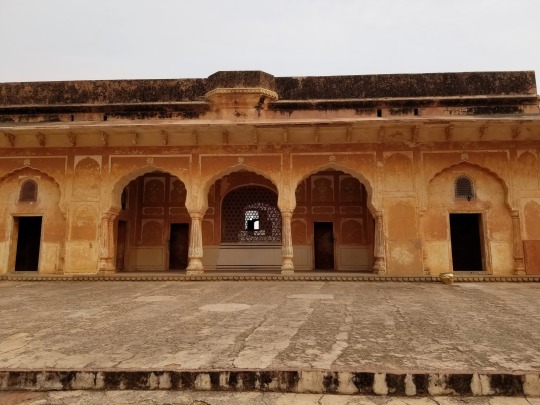
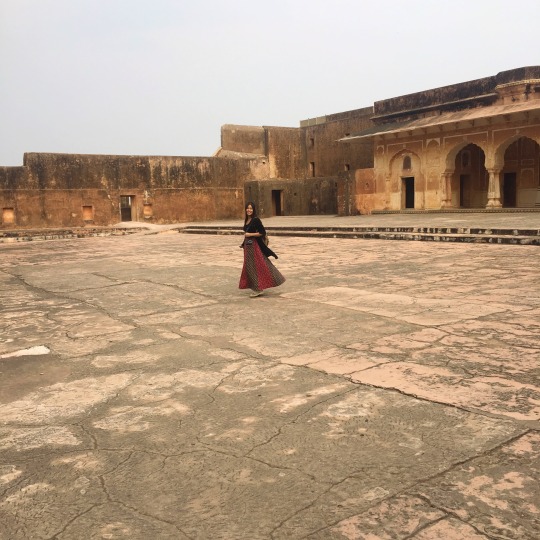
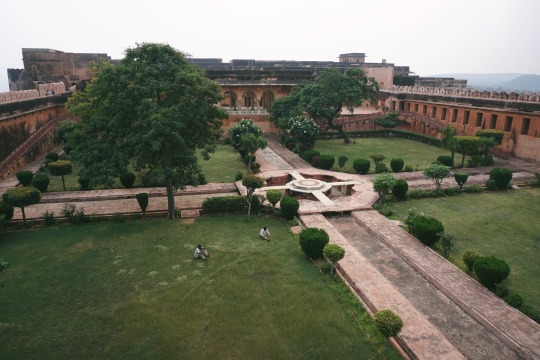

The watchtower that offers a magnificent view of the landscape below



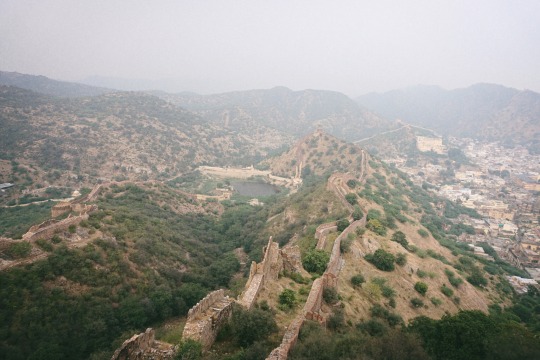
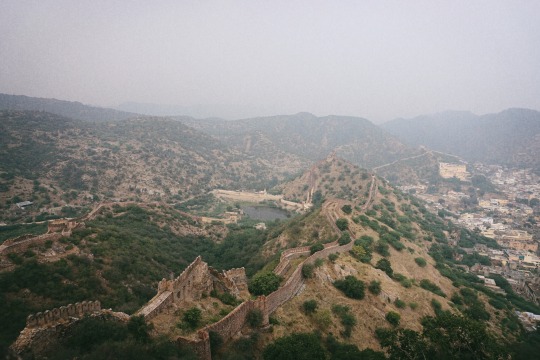

The stunning Amber Fort which we skipped because it’s too touristy



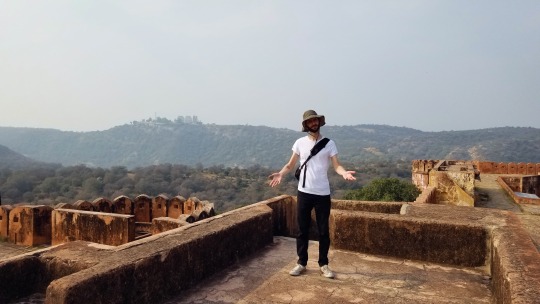

So ready for our favorite part of the day - food! hahaha

I’ve noticed that the farther we are from the touristy areas, the more authentic, less fuss and not overpriced our meals were. And these are our absolute favorite moments. Don’t get me wrong, we loved and adored about 95% of all our meals on this trip. At times though, as restaurants in busier areas attempt to cater to foreigners and make it universally palatable, the local cuisine almost loses it’s magic.
This is one’s for the books though and this day just kept getting better and better.

As we were finishing up our lunch, a commotion outside drew our and the rest of the diners’ attention. Our eyes fixed at the door and windows, without warning, there came monkeys leaping off roofs and running wild in different directions. Cab drivers, restaurant workers and tourists though laughing fondly at our primate friends were shooing them away from the dining areas.
Like our last few encounters with wild monkeys, we both couldn’t contain our excitement. Alex, as always finished before me so I urged him to go and I’ll catch up with him as soon as I finish and pay our bill.

As if we needed more min-blowing moments from this day... Fam and friends, I present to you the Grey Langur monkeys of Jaigarh Fort!!! WHAAAAT?!?!?!

It took me about 10 more mins to finish my food and find Alex. This is how I found him HAHAHA

Then this happened. I almost dropped to the floor and roll laughing

“NOOOO”

The Grey Langur is a group of Old World Monkeys.
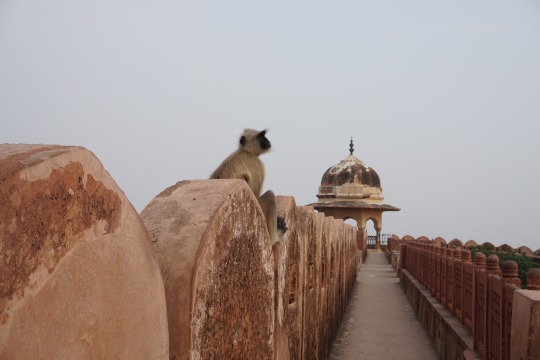
They are large, inhabiting animal and mainly found in the areas which are located in the Indian Subcontinent. These langurs are generally of grey color, with a black face. Male grey langurs are up to 75 cm long and female langurs are 65 cm long

And according to the internet, historically and up to date, these guys at the fort have not harmed any human. They were just doing their own thing, monkeying around, pretty uninterested with us boring humans.
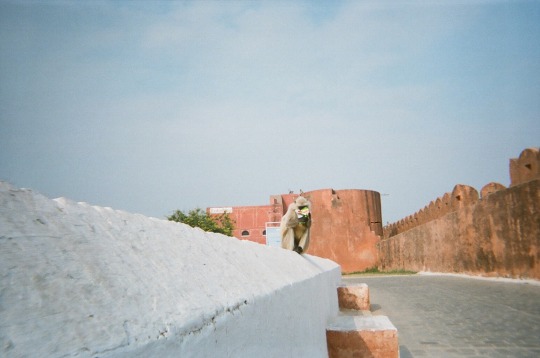
We did witness this particular shameless one who came on to a cab driver walking by who had a bag of Lays chips on hand. Without second thought, the driver surrendered his chips. And I’m not sure if it was already opened or not but the monkey was gorging on it right away.
Old chips thief!

Couldn’t get enough of this mumma and bebeh monkeh. Too precious!!!



These two pups were trying to engage the langurs in a playtime cuddle session but went unnoticed. We saw one in a submissive stance drawing himself close to the monkeys to no avail. Too cute!


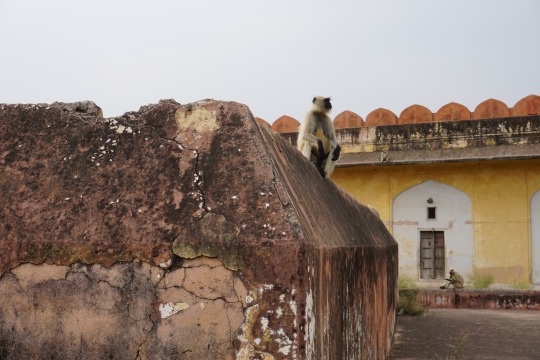

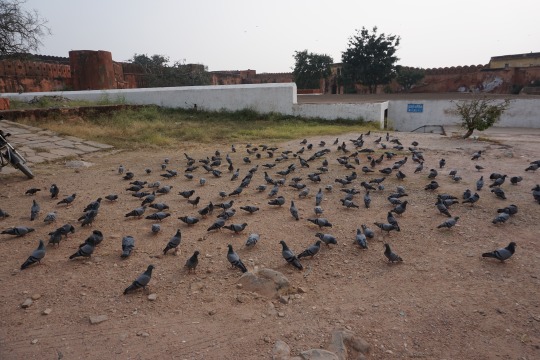
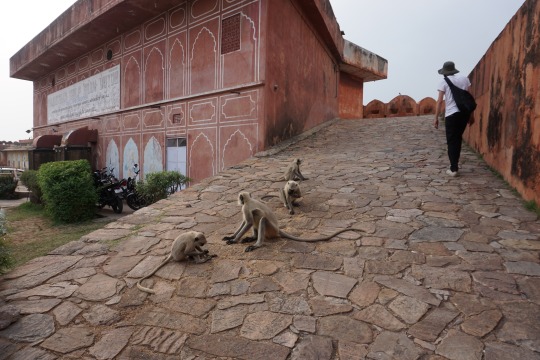










As soon as we thought we were done for the day, on our way to the exit, a guard ushered us to what looked like a passageway to a tunnel. At first I wasn’t interested but for whatever reason, we still found ourselves walking into it moments later.
More surprises in store! More halls, courtyards, secret rooms and gardens. The tunnel also led us to what seemed like a hidden room but if you keep going, inside is a puppeteer who’s just waiting to give any one a show. Too content with everything we are experiencing, we passed on that.
It’s worth mentioning though, what an eerie yet fantastical vibe it was in there. I heard females, animated voices talking as I was entering that room but came to only saw one person, a man. In that moment it definitely gave me heebeegeebees. I kept telling Alex it sounded like there were more than one person in there.



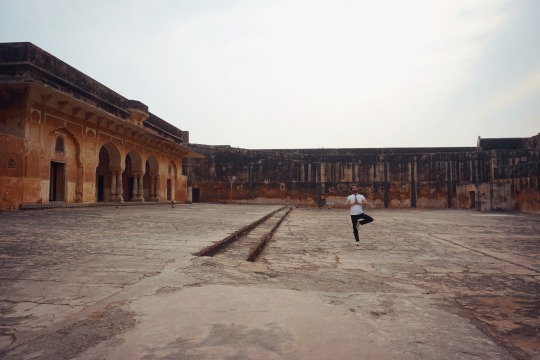

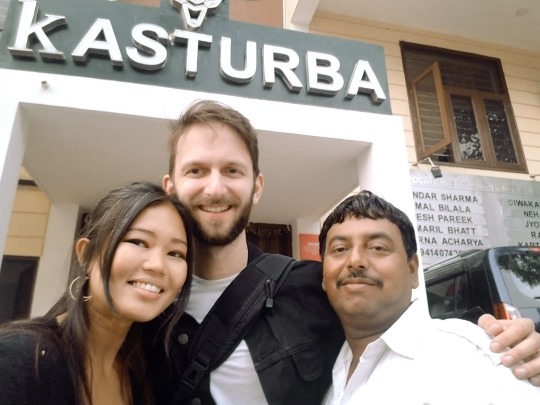
With our super lovable and dear driver, Raeez. About 30mins before this picture was taken, all three of us in his cab felt completely lost and desperate in a maze of winding and bumpy roads in the middle of a residential area, passing though the tiniest alleys and roads of our lives which of course, our driver expertly navigated through without a sweat. We were reluctantly moving to another hotel for the night because our hotel messed up our reservations. It was a last minute booking but the good thing is it was right next to Jaipur Airport which we need to be at 8am the following day.
All our GPS kept leading us to vacant lots if not dead ends instead of our newly booked hotel. We couldn’t find a phone number in their website nor in the email confirmation I got from them. We asked a passerby but he has never heard of such hotel. Alex started thinking maybe I got scammed? Oh God. Everyone was tired and this is past the time we agreed with our driver. He patiently kept trying out different formats of our address in his GPS. We asked him to just leave us and we’ll find it by foot. He refused and made a face as if we said the most absurd thing in the world.
I don’t know how but we did find our hotel, enclosed in a gated community. We thank and hug Raeez tight and off he went.
What a day. What an unforgettable chain of experiences, vibrant Jaipur.
0 notes
Note
Ok so I'm very new to Hellenic polytheism, and I'm a little bit lost with the whole calendars thing. How many calendars are out there? Is there a lot of difference between them? Do they worship different deities and have different festivals?
1) Each city-state had its own calendar. Alan E. Samuel in Greek & Roman Chronology: Calendars and Years in Classical Antiquity goes through ~95 of them, a lot of which are unreconstructable because we do not have enough information. Additionally, some city-states preferred to use numbers instead of month names in their inscriptions, so we sometimes don't even have names at all.
2) When it comes to differences, there are "families" of calendars. Geography can play a role: neighboring cities are more likely to share month names than cities that were far apart.
BUT this is not an infallible rule, because when a greek city decided to colonize and found another city, the colony would often keep the calendar (and other institutions) of the mother-city. This is, for example, the case of Thasos: the fact it is fairly well known allows scholars to partly reconstruct the calendar of Paros (the mother-city). Even then, they are not identical, which shows that the local government has made changes to its calendar over time.
Briefly put: calendars can share month names, yet not have them be exactly at the same time. They can share festival timing, but the month names could be different.
3) Often the core pantheon is similar but there might be different focuses (some epithets can be more important than others), there can be additional gods due to local influences and there can be additional figures like local heroes. Cities had different tutelary deities (eg. Athena and Poseidon for Athens, Hera for Argos, Apollo for Delphi, etc.) which greatly influenced their focus.
Which, yes, means different festivals. A famous example of how this can play out is how the Spartans only had 300 men present at the Battle of Thermopylae because Sparta had a very important festival to Apollo shortly before the battle (the Karneia). The festival required a pause of military activity and thus the soldiers left only after the festival and arrived on the front too late. While the Karneia aren't specific to Sparta, it was never part of Athens' list of festivals.
Honestly, in my honest opinion, anyone who's starting out should probably stick with the Athenian calendar for a few years. It's just the most accessible and precise one we have and serves as a good introduction to the logic of how calendars and festivals work. Once you're comfortable with it, the others feel a bit less overwhelming.
46 notes
·
View notes
Text
Duties of the Priestesses of Athena (submission)
Hey! Here’s my research on the duties of a priestess of Athena.
First of all, you might’ve already mentioned this but there’s a big difference between time periods and places. For the sake of simplicity (and amount of information), I’ll assume we’re dealing with a priestess from Classical Athens. Even so, duties varied depending on the age of the priestesses - younger girls would have less responsibility, adult women would have more, and older women would often take on the role of instructor for the girls.
Very basically, the function of a priest or priestess was to serve their God(dess). A lot of ancient cultures, Ancient Greece included, compared it to serving a lord or master: you attended to their home (the temple and sanctuary), their person (the statue), their food (the offerings) and in the case of deities, their sacred flame. In most cases, however, priests and priestesses only held office for a limited amount of time. The girls at the temple of Artemis at Brauron, for example, were only there from ages 5-10. Adult women could serve for several years whether or not they were married (sometimes they served jointly with their husband or father), and lifelong commitments were mostly restricted to elderly women, who had less outside responsibilities.
Coming to priestesses of Athena more specifically, their functions weren’t much different from those of other priestesses. Since we don’t have any sources detailing their daily life, it’s hard to know exactly how an average day was structured. As a general rule, younger members would do chores like cleaning, washing and sweeping as well as weaving (more on that later), while older members held tasks with more responsibility. I’d assume a number of people dealt with administration (keeping track of votive offerings and other money-related tasks, organising who does what, making sure there was enough oil for the sacred flames, overseeing younger members etc) and others with hospitality (welcoming visitors to the temple, answering religious queries etc).
There is evidence that some temples housed snakes. The cult of snakes is extremely ancient, dating back to Mycenaean times at the very least; over time, they were associated with Zeus, Asklepios, the Agathos Daimon (a protective spirit of the household), and Athena. A sacred snake was kept in the temple of Athena Polias in Athens. The priestesses left honey cakes for it each month, and when it didn’t eat them, it was taken as a terrible omen: Athena had abandoned the city. (see Herodotus Book 8, 41.2-3)
Cleanliness was very important. Before entering a sacred space - whether a temple, sanctuary or when preparing for ritual - priests and worshippers alike were required to wash their hands, preferably their whole body, with lustral water (khernips in Greek), and change their clothes. Many sanctuaries forbade purple, which was a sign of wealth, and even demanded white clothing, which signified purity and modesty. I can’t find any sources for temples of Athena where this was a requirement, but this philosophy was certainly a background to temple life in Ancient Greece and so is worth mentioning.
When it comes to ritual, the altar was also purified with lustral water as well as with barley groats. These were carried in a basket and thrown around the space of sacrifice, as well as on the animal being sacrificed, by the participants. The ritual knife was kept underneath the barley groats, so it would become visible when they had all been thrown. Other ritual objects included incense, libation vessels, and vegetal offerings (cakes and the like). All of these together were referred to as ta hiera, the sacred things, and were treated with high regard.
Athena’s cult also had its own sacred objects. These are best evoked in the context of the festivals in which they played a role. The Ancient Greek year was rife with festivals; some would’ve been more important than others to a priestess of Athena, but everyone celebrated regardless of which God(dess) they were devoted to. As there are dozens of festivals, I’ll only give an overview of those which were most relevant to Athena’s cult. However, Hellenion.org has short descriptions of all the festivals, as well as a calendar which shows how they are distributed throughout the year. The calendar aims at modern practise and gives both modern and ancient dates, but I have been involved with the organisation behind it and I can attest that it is well-researched and based on respectable sources.
The Athenian calendar was centred around the New Year on the first day of the month of Hekatombaion, in June or July depending on the year. Festivities started as much as two months earlier with the Kallyntheria and Plyntheria, between 20-25 Thargelion (around May). The Kallyntheria was when the temple of Athena was swept out and cleaned, and her sacred flame relit. For the Plyntheria, soon after, her statue was undressed, veiled and carried to the sea in a procession led by someone carrying fig pastries (they were believed to be the first cultivated food). Two young priestesses then washed the statue in the sea before it was carried back. All this was organised by one eminent family, the Praxiergidai. It’s believed that this was also the occasion when Athena’s peplos, her dress, was also washed by a priestess.
A few days later, on 3 Skirophorion, was the Arrhephoria. Two young priestesses of Athena called the arrhephoroi, who had lived on the Acropolis for the past year, were given mysterious objects in closed baskets. These objects were called ta arrheta, the unspoken. As the name indicates, nobody knows what they were - even the girls carrying them, and the priestess who gave them to them. During the night, the girls brought the arrheta under to an underground passage and came back up with something else, also unspoken, wrapped in a veil. They were then discharged from their service. The whole festival is extremely mysterious and theories about it abound, but in truth, we have no idea what went on beyond what I’ve described.
Next came the Skira. On 12 Skirophorion, a priestess of Athena, a priest of Poseidon and a priest of Helios walked under a canopy from the Acropolis to Skiron, a hero sanctuary. This was close to a sanctuary of Demeter and Persephone, who symbolically received the three Gods there. The festival was presided by women, who got to leave their homes for once and play a major role in city life - something the men found deeply unsettling!
Soon after the Skira was the New Year; not much happened besides the archontes being sworn in for the year. The big festival, the Panathenaia, was a few weeks later, on 23-30 Hekatombaion. A ‘small’ Panathenaia was celebrated yearly, and a much larger, Panhellenic one was held every four years. Both types included a torch race, the winner of which got to light the sacrificial fires. Many sacrifices were made, and in the Great Panathenaia, athletic and musical contests were held, as well as recitations of Homeric poetry. Most importantly, the statue of Athena was presented with a new peplos for the year. The dress was placed in a ship-like cart and carried in a big procession to the temple, where it was draped onto the statue. Traditionally, the peplos was blue and yellow and decorated with a representation of the fight against the Giants.
This peplos took nine months to weave. Work began at the Khalkeia, on 30 Pyanepsion, a festival sacred to Hephaistos and Athena. Historians are unsure who exactly wove the dress - it might’ve been the younger girls, maybe unmarried maidens, maybe older married women, or maybe a combination of all three. In any case, the weaving progressed during nine months in the temple of Athena Polias, until the dress was finally ready for the Panathenaia.
As for the bibliography, I also looked through Connelly’s Portrait of a Priestess, as well as these two books:
Walter Burkert, Griechische Religion der archaischen und klassischen Epoche (Stuttgart 1977)
H. W. Parke, Festivals of the Athenians (London 1977)
106 notes
·
View notes
Text
The origin and custom of Thanksgiving
Thanksgiving Day is a unique holiday in the United States and Canada.
Thanksgiving originated in more than 300 years ago a group of more than 100 people emigrated to the United States of Europe, hunger is hard to survive, the majority of people in the first year of winter freezing starved to death, the rest of the more than 50 people, with the help of the local indigenous inhabitants Indians, learned to fishing, hunting, corn and pumpkin, these people in the second year of harvest festival, held a celebration of Thanksgiving to god, and invited the Indians to attend together. That's where Thanksgiving comes from. Later, President Lincoln announced that the fourth Thursday of November was Thanksgiving Day, and the United States had a new public holiday.
Thanksgiving Day in the United States

Reunion
Americans spend Thanksgiving mainly as family members, and then enjoy a big holiday dinner together. Family don't live in a city are home reunion before Thanksgiving, Thanksgiving holiday is the most tight, American airlines plane classes almost full, also often can appear the situation such as the flight was delayed. However, people may also be willing to spend the holidays with family. It's about the same as Chinese Spring Festival.
Eat Turkey
Every Thanksgiving, American families have to eat Turkey. Turkey has become a symbol of Thanksgiving. In addition, they usually eat traditional dishes such as zucchini, cream Onions, mashed potatoes, pumpkin pie, etc.
The custom of eating Turkey at Thanksgiving is now unproven. There is a saying that at a harvest festival in the 16th century, queen Elizabeth was eating a roast goose, when she heard that the Spanish Armada was silent. So the goose became a bird of love for the British harvest season. When the pilgrims came to the United States from England, because there were so many turkeys in North America, it was easier to find them, instead of roasted geese.
Thanksgiving Day parade

There's a special event in New York, where Macy's is holding a holiday parade every Thanksgiving. The Macy's Thanksgiving Day parade, the annual Thanksgiving Day parade hosted by Macy's, began in 1927. The parade began around 9 am on Thanksgiving Day and lasted three hours, with tens of thousands of people taking part. The Macy's Thanksgiving Day parade, which began in 1924, is the biggest Thanksgiving celebration in the United States, and millions of people watch it every year.
The parade included more than 1,500 cheerleaders, 800 clowns, 10 bands and 24 giant cartoon balloons. Tens of millions of people watched the parade on television. The macy's Thanksgiving Day parade, which began in 1924, accompanied generations of americans and brought joy and joy to countless American families.
To send food
Meanwhile, hospitable Americans can't forget to spend the holidays with friends, bachelors or far from home. From the 18th century on wards, the United States began to show the custom of sending a basket of food to the poor. There was a group of young women who wanted to choose one day of the year for good, and it was the most appropriate thing to do. So on Thanksgiving Day, they packed a basket full of food and delivered it to the poor. It was a long story, and soon many people were learning to do so. No matter who they meet, they will say, "thank you!
Thanksgiving Day in Canada

No religious celebration
Thanksgiving Day in Canada and the United States is not on the same day, because of its higher latitude, season of grain mature early, with the americans to remember the traditional Puritan ancestors settled in the new world is different, the Canadian mainly to give thanks for the harvest of success. To harvest festival, thanks to nature, thanks to abundant sunshine and dew of heaven, and let the grain growth for Thanksgiving theme, and without any religious content, therefore, Thanksgiving as early as in the United States and Canada is due to the celebrations is the second Monday in October.
Thanksgiving in other countries
Egyptian: pretend to cry for corn
The harvest festival in ancient Egypt was held in honor of their crops god Min. Their harvest season is spring, so this festival is held every spring. During the festival, the ancient egyptians first held a parade, then a holiday feast. At the same time, music, dance, sports and so on are their celebrations.
Jew: a cottage is under the stars
Jews also celebrate harvest, and their festival is called "the festival of suckus," which is the jewish harvest festival. Each autumn, the festival has a history of more than 3,000 years. The festival begins in the Hebrew calendar, the fifteenth day of the seventh month of the jewish calendar, the fifth day of the jewish calendar.
Greek: cake and fruit are for the goddess of agriculture
The ancient greeks believed in many gods, including a goddess named Demeter, who was in charge of agriculture, marriage, and fertility, and the "Thesmosphoria" festival, which was held every autumn, in honor of the goddess. On the first day of the festival, married women set up a small house covered with leaves and placed on benches made of plants. The next day was fast, and on the third day the feast was held, and the goddess was consecrated to corn seeds, cakes, fruits and pigs.
Thanksgiving is actually a common holiday in the United States and Canada, and the way the two countries celebrate Thanksgiving is different.
0 notes
Text
Ideal Songs Festivals in the World
With out songs, wouldn't daily life be a enormous miscalculation? If you adore tunes or if you're a diehard fan of a specified band, DJ, or even a songs genre, then nothing will excite you much more than seeing them perform reside at your favourite tunes competition. Now, exotic audio festivals are hosted all around the planet and thousands and thousands of visitors flock them each and every calendar year to see some of the largest names in the music business. There are hundreds of music festivals that host huge identify artists every single 12 months. Here is our countdown of the best and the most significant audio festivals these days. 7. Mawazine (Rabat, Morocco, Africa) Mawazine, also acknowledged as Rhythms of the Entire world, is a planet class tunes pageant and the biggest that is held in the continent of Africa. Final 12 months the line-up included Chris Brown, Hardwell, Christina Aguilera, Pitbull and numerous a lot more. six. Fuji Rock (Yuzawa, Niigata Prefecture, Japan) Fuji Rock is the biggest outside tunes occasion in Japan and 1 of the greatest and most recognised tunes concert events in Asia. It all started way again in 1997 where it took place at the foundation of Mount Fuji, but has been held at the Naeba Ski Resort because 1999. Fuji Rock features primarily rock and digital music and this year in July it will be hosting artists these kinds of as, Gorrillaz, Queens of the Stone Age, Aphex Twin, Liquid crystal display Soundsystem, Bjork, Lorde and numerous far more. five. Splendour in the Grass (Byron Bay, Australia) Splendour in the Grass is a world well-known summer time tunes festival that has been held every calendar year because 2001. The festival offers indie rock, hip hop, electronic and alternative genres. The tickets for this 12 months sold out in a flash and it is easy to see why as it functions artists and bands this sort of as The xx, Queens Of The Stone Age, Liquid crystal display Soundsystem, SigurRos, HAIM etc. 4. Exit (Novi Unfortunate, Serbia) Exit is yet another internationally renowned songs festival and 1 of the most recognised. It attributes digital, rock, steel, hiphop/rap, reggae and punk music. Exit has been an yearly event, organised every single year given that 2000 and requires location at the Petrovaradin Fortress. The main artists lined up for 2017 so far are The Killers, Liam Gallagher, Paul Kalkbrenner, Alan Walker, Several years & Years, Hardwell, furthermore several more. 3. Rock in Rio (Alternates among Rio de Janeiro, Brazil Lisbon, Portugal Madrid, Spain Las Vegas, Nevada) The Rock in Rio audio pageant originated in Rio de Janeiro, Brazil in 1985 and spans across different world-wide cities. There have been six Rock in Rio Festivals in Lisbon, Portugal most not too long ago in 2014, a few in Madrid most just lately in 2012 and in Las Vegas in 2015 and 2017 named "Rock in Rio United states of america." This yr the festival in Brazil hosts confirmed headliners Guns N' Roses, Crimson Scorching Chili Peppers, Justin Timberlake, Girl Gaga, Aerosmith, Pet Store Boys and several other folks. 2. Tomorrowland (Increase, Belgium) In 2nd area, Tomorrowland is one particular of the greatest music festivals in the globe for Electronic Dance Songs (EDM). Hundreds of digital music DJ's get on the stunningly crafted levels at Tomorrowland. The line-up for 2017 is even now getting finalised, but in 2016, Tomorrowland introduced in names like Deadmau5, Eric Prydz, Alesso, Armin van Buuren, Dimitri Vegas & Like Mike, Martin Garrix, Tiësto and many others. one. Coachella (Indio, California, U.S.A) Our quantity one select is Coachella. It really is one of the most significant and arguably the very best music festivals in The usa and possibly, in the planet. Coachella often sells out its ninety nine,000 capacity for every weekend, which are all around 198,000 tickets in overall. In 2016, Coachella gathered hundreds of artists ranging from Guns N' Roses to Calvin Harris, who had been the major headliners, and also highlighted acts like Ice Dice, Zedd, Sia, and numerous a lot more. Because of its location in California, Coachella is also a best draw for several celebs like other musicians and popular actors who appear to enjoy the festival. So ahead of you jet off to enjoy the epic music festivals close to the world, you ought to look at carrying an global vacation card, which is safer than carrying wads of income and also assists you help save income at the audio pageant. Also do your bit of homework in choosing the greatest currency trade solutions that offer you you the very best Foreign exchange costs.
0 notes
Text
‘Why do Christians celebrate Christmas?’
Two members of the Aldor* Bible storying project from Southeast Asia share what Christmas means to them.
June*:
The first Christmas I celebrated was when I was young. As far as I can remember, I was probably involved in dancing and singing. Children in my village really loved joining in the Christmas dances. My parents became Christians when I was young, so I am in the second generation of believers. My grandparents, however, are all non-believers. We have had the New Testament in our language since 2005.
In the area where I grew up, Christmas was the biggest celebration all year. We understand Christmas to be the time Jesus came in human flesh and was born to save people from their sin. Everyone really looks forward to Christmas. Families want to get together. Even if we’re far away, we want to go back to the village for Christmas.

Where I grew up, the Church prepares for Christmas well in advance. Starting in November, every home saves as much money as they can to be part of the celebration. People who don’t have much money work hard to plant vegetables and fruits in their fields, or raise chickens so they can be a part of the celebration as well when Christmas comes. Before Christmas, people practise songs to go out carol singing.
We have had the New Testament in our language since 2005
1st December is a holiday we celebrate at church. We go carolling to every house in the church. Some unbelievers will even go with us if we invite them. Every house prepares something for the carollers to eat. We always have full stomachs when we are carolling! Carollers bring small presents (often a calendar) for each house. They sing and announce Jesus’ birth and then pray together. It’s a really happy time. One thing I don’t like, though, is that the people who are carolling collect donations at every house. It can be very hard for poor people.
For Christmas day, if there is just one church in the village, they celebrate all day and night. But if there are many churches from the region getting together, the celebration lasts around two whole days. When many churches gather to celebrate, the village hosting the celebration has to prepare and provide everything, but every church involved contributes to the Christmas offering.
Starting from 24th December, we have a worship service. After the service, the youth from each church present dances, songs, and dramas. On the morning of the 25th, we have another worship service.
Some people just write their own name on their present!

To make special food for the Christmas celebration, we kill a pig or a cow to serve to everyone for the feast. We also give Christmas presents to each other. We cut a Christmas tree in the forest in advance. We set up a large stage for the Christmas celebration and put the tree there; then we hang presents on the tree. People write a note on each present to say who it is for; parents give presents to children, etc, (but some people just write their own name on their present!)
In addition to this, during the Christmas season, sometimes the youth group leads outreaches in other villages with dances, music, dramas, and preaching. During the Christmas season, we usually invite non-believers. Because they are interested in Christian dance, music, and drama, they will come and see what we are doing.
Ruth*:
I remember something really well, from when I was about 12. On the last night of November, the youth didn’t sleep. Before midnight, we wrote a Christmas greeting in huge letters on a 100-foot-wide main street downtown so that, for the whole of December, all the people passing in cars would easily be able to read it. And then we went from house to house singing songs and greeting people. When it was finally midnight, we ate rice porridge. Finally we closed with prayer for all the people who would be celebrating Jesus’ birth throughout December.

Because most of the preaching we hear in December is about how Jesus came to the earth to save all people, we celebrate but make a lot of effort not to lose Christ in celebrating Christmas. Some churches choose topics like peace, joy, love, or grace and preach on these topics for the whole month.
For the whole year, we prayed and saved up to do outreach
Last year, our family went on a Christmas outreach trip. We went to a village in a part of our country where there are almost no Christians. This village has around 30 homes. My husband’s cousin moved there after getting married to a woman from this village. He had never told his new family about his God. When we asked why he had never shared with them, he said, ‘I’m not a pastor; I don’t know how.’
Also, since he is a newcomer to this village, and they are very strong Buddhists, he didn’t want to cause any problems. So my husband and I discussed with him and his wife, saying, ‘It would be good if we can come to your village and do something.’
For the whole year, we prayed and saved money to be able to do outreach there. When the December holiday arrived, and my son was out of school, we all went to the village. The first day we rested. We just took time to talk to the family and relatives and get closer with them. In the evening, they made their traditional refreshments and hosted us. It was really enjoyable.
The next day, on December 23, together with the owner of the home where we were staying, we treated the whole village to the traditional soup. They knew that we were Christians, and invited everyone by telling each other that the Christian family was giving away food. So many people ate the soup.
‘Why do Christians celebrate Christmas?’
I hung out where all the women were gathered. My husband stayed in the guest room where the older men and married men were talking. Up to that point, we still hadn’t said anything about Christ. We had to observe the situation first. We were afraid to even start. It could get so bad we would be called in to the police station. But my husband and I, from our different places, were praying for the people eating together. How could they know about Jesus? How could we tell them?
While we were still praying and talking with them, one man asked my husband, ‘Why do Christians celebrate the Christmas festival? What is the reason they celebrate?’
And so we told them we are welcoming Jesus’ birth because he came to free people from their sins. People try to do good things to erase their sin, but Christ came and erased sin for us. With other examples, we explained in such a way that it would be easy for them to understand. They listened to my husband and were really interested. Even though they didn’t join the discussion, the women were sitting near circle of men, listening with interest. People started comparing it to someone with a son who is sentenced to go to prison, but then someone comes and gives a guarantee and sets him free.
Our family returned home joyfully, having accomplished our Christmas goal
I kept praying and was honestly just really excited. The money we used on this trip wasn’t wasted! These people had the chance to hear about Christ’s salvation!
The last morning before we returned to the city where we live, we handed out the tracts we had prepared. Our family of three was able to return home joyfully, having fully accomplished our goal of a Christmas outreach!

June and Ruth work as part of a team training Christians around their country to share Bible stories with their friends, family and neighbours. If you want to share the good news about Jesus too, why not give a gift today? Follow the link below to donate.
*Names changed for security reasons.
Go to the article
0 notes
Link
One of the beauties of being self-employed and living in the boonies is the option to spend the better part of a day compiling shit posts for Reddit while cuddling with your cat.
While I sincerely hope this post is far from shit, here goes – The Ultimate List of Money Saving Tips for Travel
Flights
First and foremost…Read the /r/travel Airfare Wiki – You’ll soon be transformed into a cheap flight guru and save /u/jippiejee an ulcer in the process.
Sign up for airline newsletters: I know your inbox is already overflowing with crap from JCPenny’s & Old Navy but some of the cheapest tickets I’ve ever purchased were direct from the airlines during a flash sale. This technique is especially good for domestic flights or shorter international routes.
Get to know the budget airlines serving your hub or hubs you plan to visit. Most of these airlines don’t show up on flight search engines….WOW, Wizz, etc. Just Google <budget airlines *airport name*>.
Sign up for Scott’s Cheap Flights – Also, http://ift.tt/1w6Iebc & http://ift.tt/OmlAMB
Roll the Dice with 3rd Party Booking Sites: OTAs will bend you over without lube should a situation arise where you need to access Customer Service – but if you’re 100% sure of your dates/times and are capable of spelling your name correctly, there are plenty of scenarios where CheapoAir, Expedia or Travelocity do find goofy flight options that are significantly cheaper than booking direct. Travelers willing to endure brutal layovers to save a few hundred bucks can score killer deals. Don’t rely on OTAs but don’t totally discount them during your flight search, either.
Massage Google Flights’ prostate: Here’s a good article from the Liberal Elite on giving Google Flights the finger in a good way – Google Flights is a utensil you can’t afford to leave off your tool belt.
Ask your parents for loads of free money: YMMV with this one. I’ve never had any luck with it but I’ve seen plenty of folks doing Yoga poses on rocks who have.
Listen to the fine people at Skyscanner. They certainly know what they’re on about.
I don’t personally do it but /r/churning/ provides plenty with a MASSIVE travel boner.
Try to be as flexible as you can…search for flights using the flight calendar whenever possible. The exact same flight from the same airline can often be 1/2 the price with just a 2-3 day shift.
Accommodation
To get a nicer hotel room at a deep discount, give Hotwire Hot Rates a go. A similar system is available at http://ift.tt/1srpqEi
Search rooms on Booking.com but then contact hotels direct to see if they’ll meet/match that price. Properties lose fat commissions to booking sites and can be open to negotiating, particularly if it’s a small owner-run place.
http://ift.tt/2n3Sd6U also a pretty good resource straight-up for cheap hotel rates.
Believe it or not, a lot of people still have no clue about hostels…an important detail to note is that not all hostels are 20 to a room, loud, stinky dens of iniquity…some are (and that’s great if a good party and cheap bunk is what you’re after) but others aren’t. You can find super nice hostels that are more like boutique hotels with shared rooms than wild booze/sex dungeons for 20-somethings…and everything in between. Here are a few popular engines: http://ift.tt/zWgMXx http://ift.tt/uTW9Gd http://ift.tt/1Yn1TTZ http://hostelzoo.com/
Sign up for these Newsletters: http://ift.tt/2n3SdDW & http://ift.tt/TRr3xP
You’re probably a millennial. Act like it: https://www.airbnb.com/
Caveat…I know nothing about this particular form of freeloading: http://ift.tt/1pMh7zt
Vacation rentals can be a killer deal if you’re traveling with a group: Along the same lines, Google <vacation rentals in *town name*> to find local websites with apartment/house listings.
Transport
Rome 2 Rio is fucking amazing.
Take the subway and don’t be intimidated by the public bus system. Buses are for losers who can’t afford to buy a car…if they can figure it out…you can figure it out. Or walk, you lazy bastard.
For low-budget travelers, the old “take a night bus/train to save a night’s lodging” still works wonders…bonus points if you’re a normal sized human and can actually sleep in a chair.
Rent a bike.
Food
Follow the 6-block rule: Never eat within 6 blocks of a major tourist site.
You’ve been buying food from the supermarket your whole life. It won’t kill you to eat a peanut butter & jelly sandwich in Berlin.
Eat local: Take a chance and wander into neighborhood joints where you have no idea what’s going on. Make the “I’m hungry” hand-to-mouth gesture to the wait staff and they’ll figure out that you’d like to exchange money for food.
Along the same lines…ask locals, even the staff at your hostel/hotel, where you can find good cheap eats.
Pack Imodium and eat street food.
Go Full Cliché! Ooh—la—la, baguette and brie on the green. Voila! Déjeuner bon marché!
Activities
Research museum pricing policies and free nights: Many major museums/sites offer free entrance once a month or once a week. If you’re willing to wait in line you can schedule your visits accordingly. Feel free to use this wait time to whinge to fellow queue mates about your crippling student loans.
Most cities will have a “What’s Happening” site online or a free newspaper version around town…find free festivals, free exhibits and free whatevers.
Into art? Skip museums and browse galleries…just shave and take a shower first…don’t make it obvious that you can’t afford a goddamn thing in there.
Learn to explore aimlessly…some of the most interesting cultural differences can be found wandering the aisles of a hardware store.
Don’t be afraid to skip big name sites if they don’t interest you.
Other
Follow your favorite airlines, hotels & travel sites on social media for first crack at specials.
Research destinations with this Travel Calculator: It could be that there’s another trip just as interesting as the one you’ve got planned for half the cost.
Don’t stress balls over it…but if possible, find a bank card with zero to no international withdrawal fees. The Yankee Doodles use Charles Schwab. (I use the same bank I always have and just pay 5 bucks because I am old and lazy.) If you do simply pay the fee (like me), take out the max with every withdrawal to limit the damage.
Some people like to do backbreaking farm work in exchange for lentils and man bun tying tips: http://wwoof.net/
And here’s a pseudo-legal way to find odd jobs to offset travel costs: http://ift.tt/1H5ih7l
Slow Travel: You’ll never see it all. Don’t try to. Spend more time in fewer places and you’ll save a bundle…my recommendation is to blow all those savings at the pub.
Search Google for promotional codes…you know that little box at checkout? Promo/Coupon? You’d be amazed how often you can find a code to slap in there for an additional discount.
Don’t buy a backpack full of garbage…it’s one thing to bring home a super cool keepsake or two but 90% of the shit I used to buy in the name of souvenir! is now collecting dust on a family member’s curio shelf.
Stuff Not to Do
Don’t buy one of those stupid LIfestraws as if you’re living in a post-apocalyptic video game – just by bottled water like the rest of us…most places sell 5 liter jugs so the true penny pinchers can top up in the hostel.
I personally refuse to support Hidden Ticket Travel but here at the bozos behind the madness. Above I said, “Don’t be afraid to skip big name sites if they don’t interest you.” Don’t confuse this with “Skip sites that DO interest you over a few bucks.” Don’t be that guy who went to Rome and was edgy enough to only see the Coliseum from the outside.
Don’t be a fucking mooch. Don’t be “that guy” who fills his backpack with the free hostel breakfast, ensuring hostel goers with a hangover are left to starve because all the toast is in some hippie’s Jansport. Similarly, don’t whine and cry and bitch and moan and wail on to your new travel buds about how “poor” you are so they’ll buy you drinks or what have you…You’re not poor. Poor people don’t go on vacation. I repeat. Poor people don’t vagabond across the globe in search of Machu Picchus, foreign poontang and spiritual enlightenment. Poor people don’t own 200 Euro backpacks with Camelbak pouches.
Addendum
If you’ve got tips you’d like added to the list, just send me a PM and I’ll cut & paste them here >>>
submitted by /u/Oax_Mike [link] [comments] from Travel http://ift.tt/2nazpUg via IFTTT hoteles cancun hoteles zona hotelera cancun hoteles en guanajuato cadenas de hoteles 5 star hotels new york city five star hotels in new york city 5 star luxury hotels on new york city - best low cost london hotels - NYC hotels five star
#fancy hotel rooms#luxury resort packages#images of 5 star hotels#5 star hotel rooms pictures#luxury
0 notes